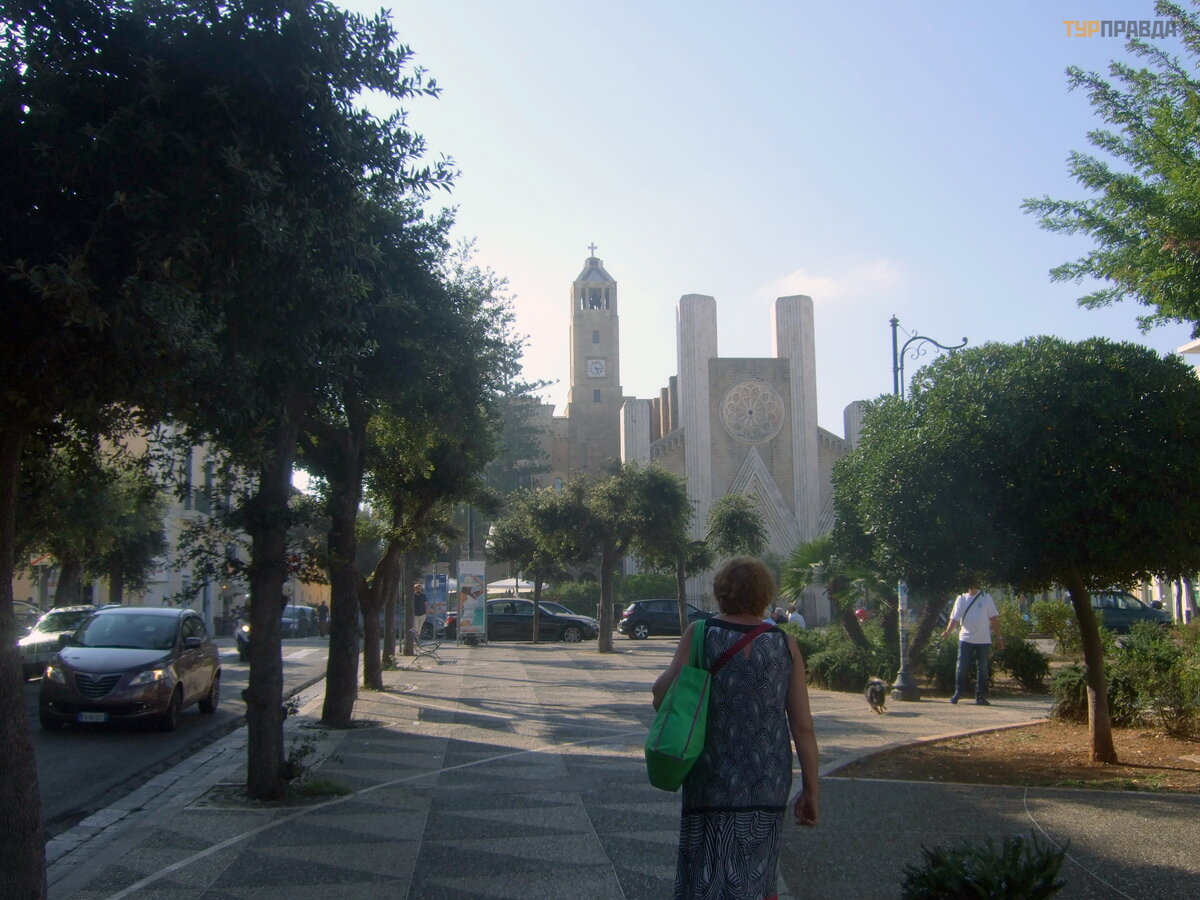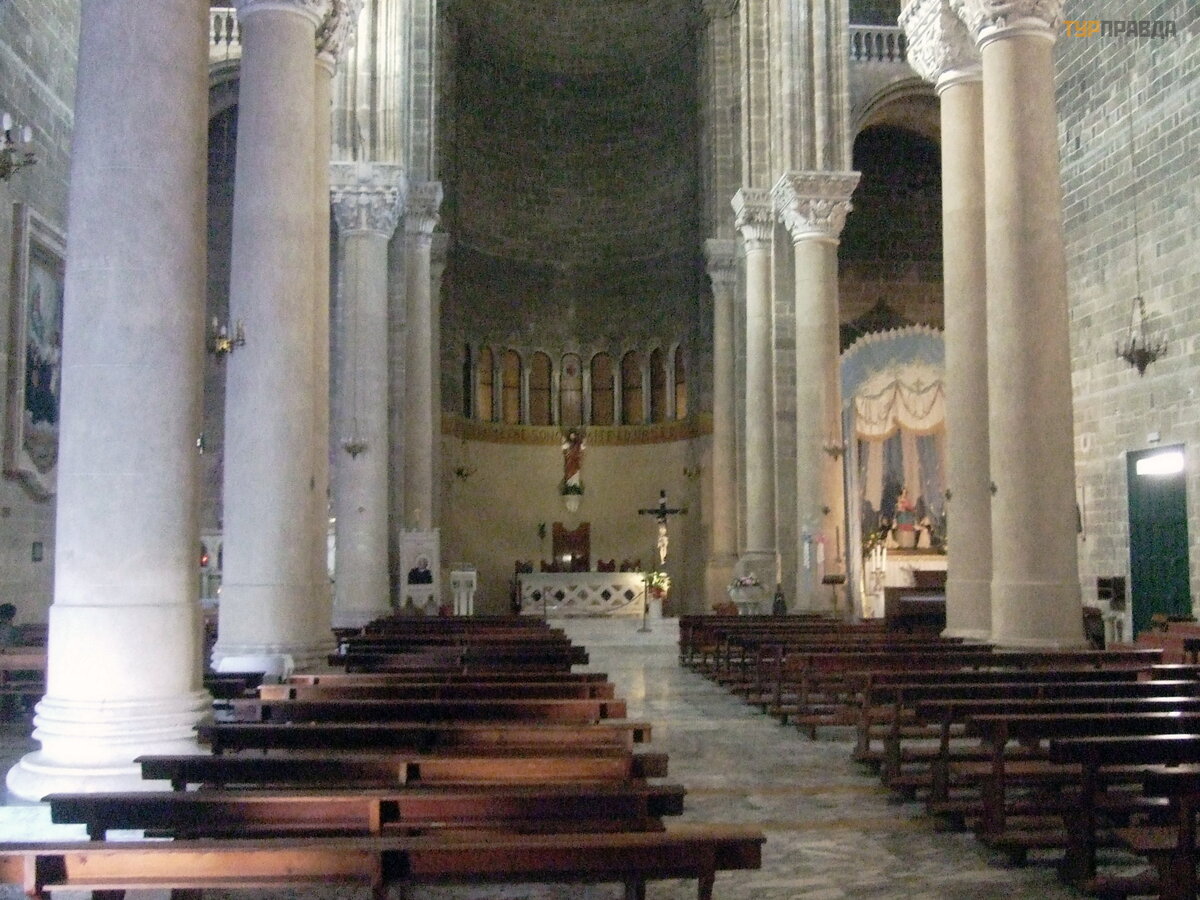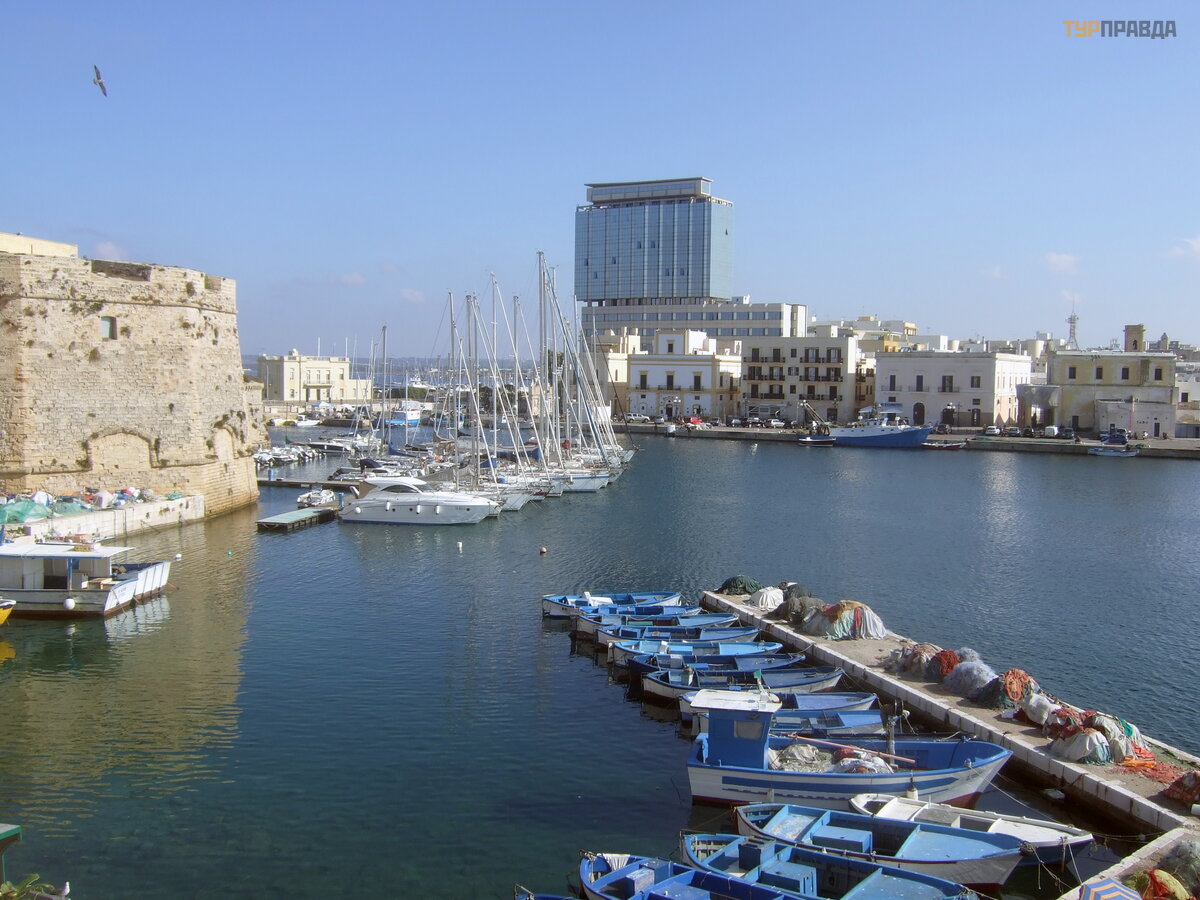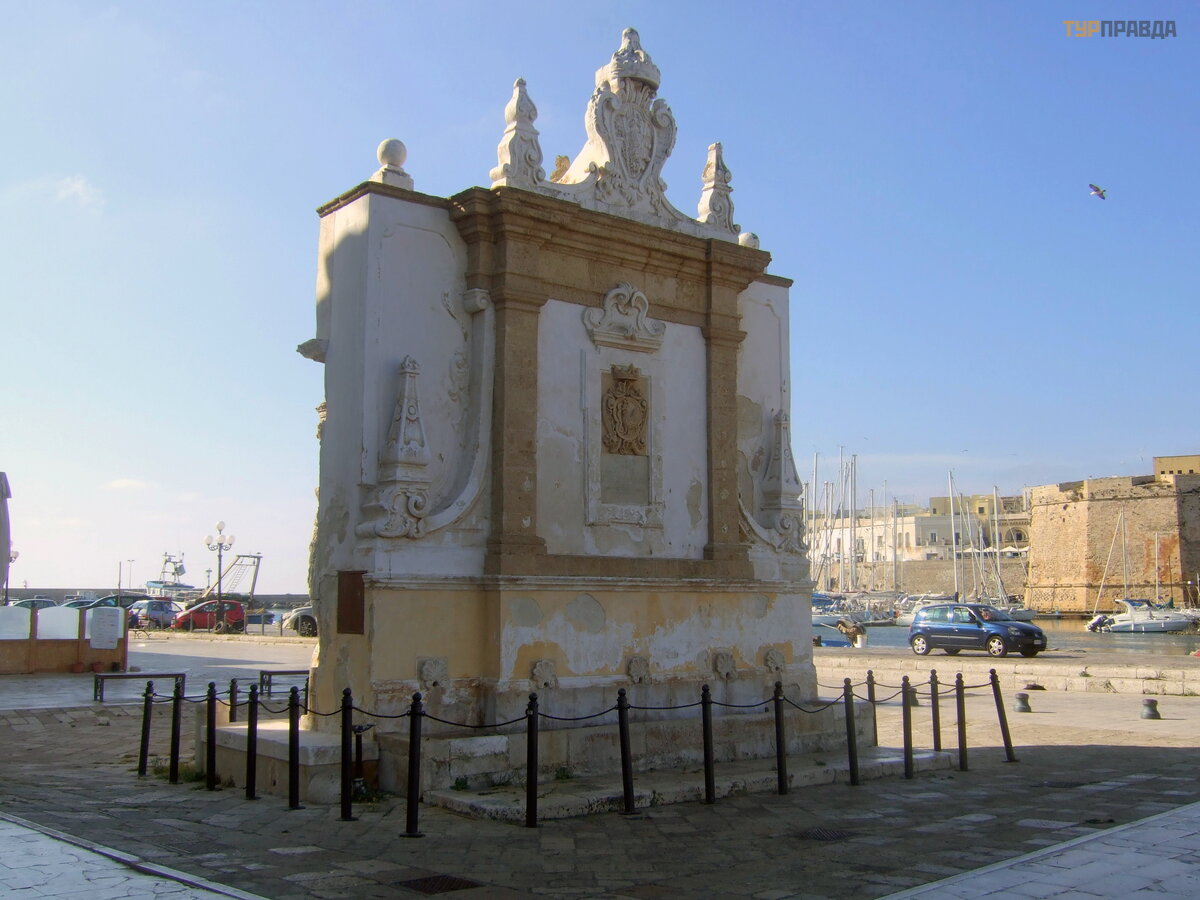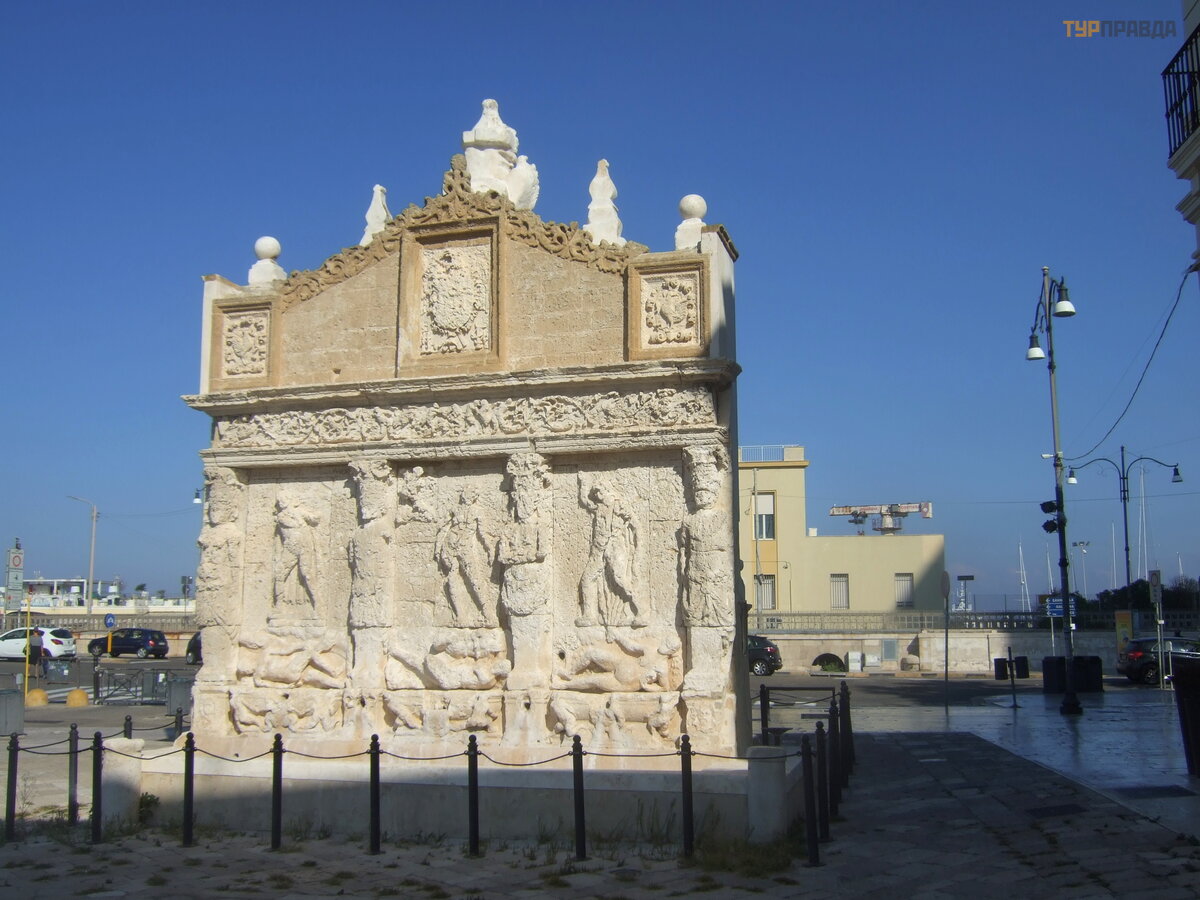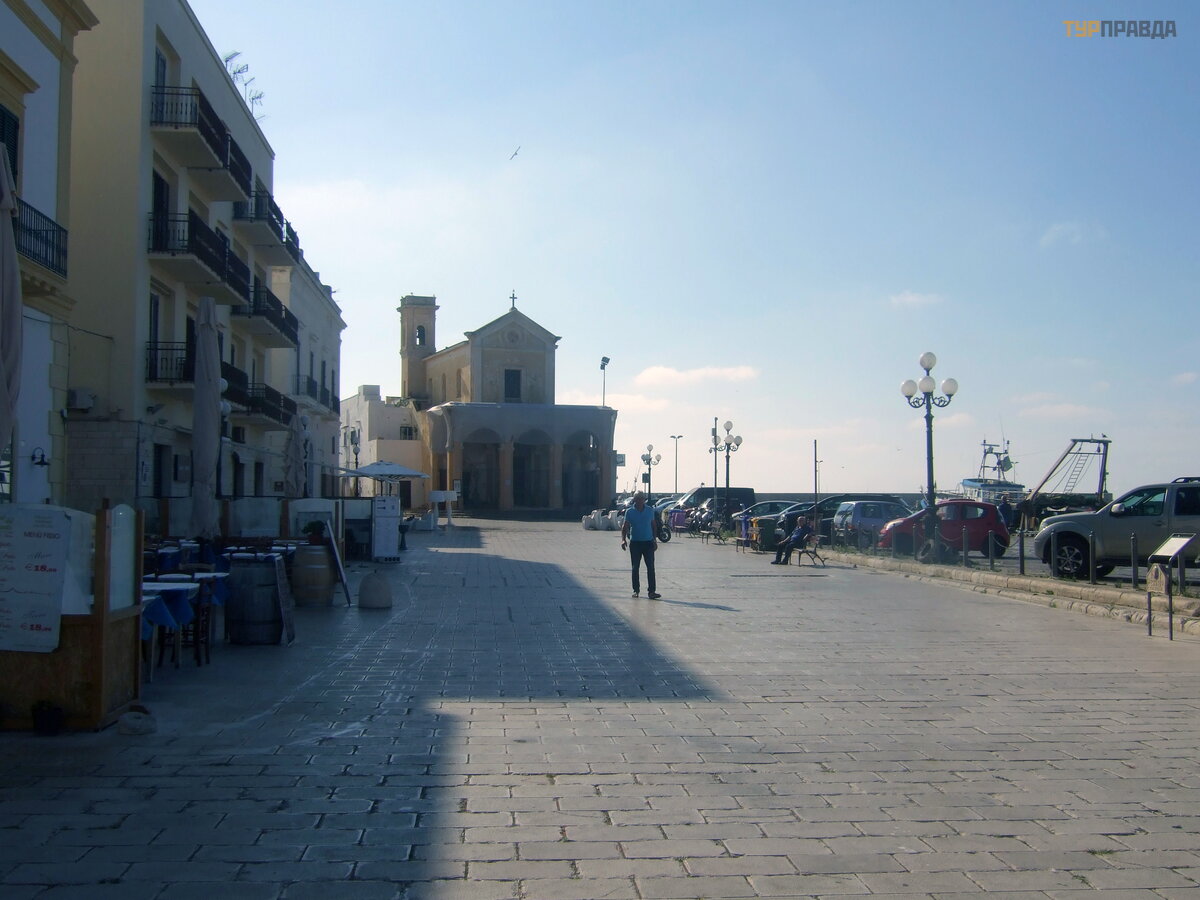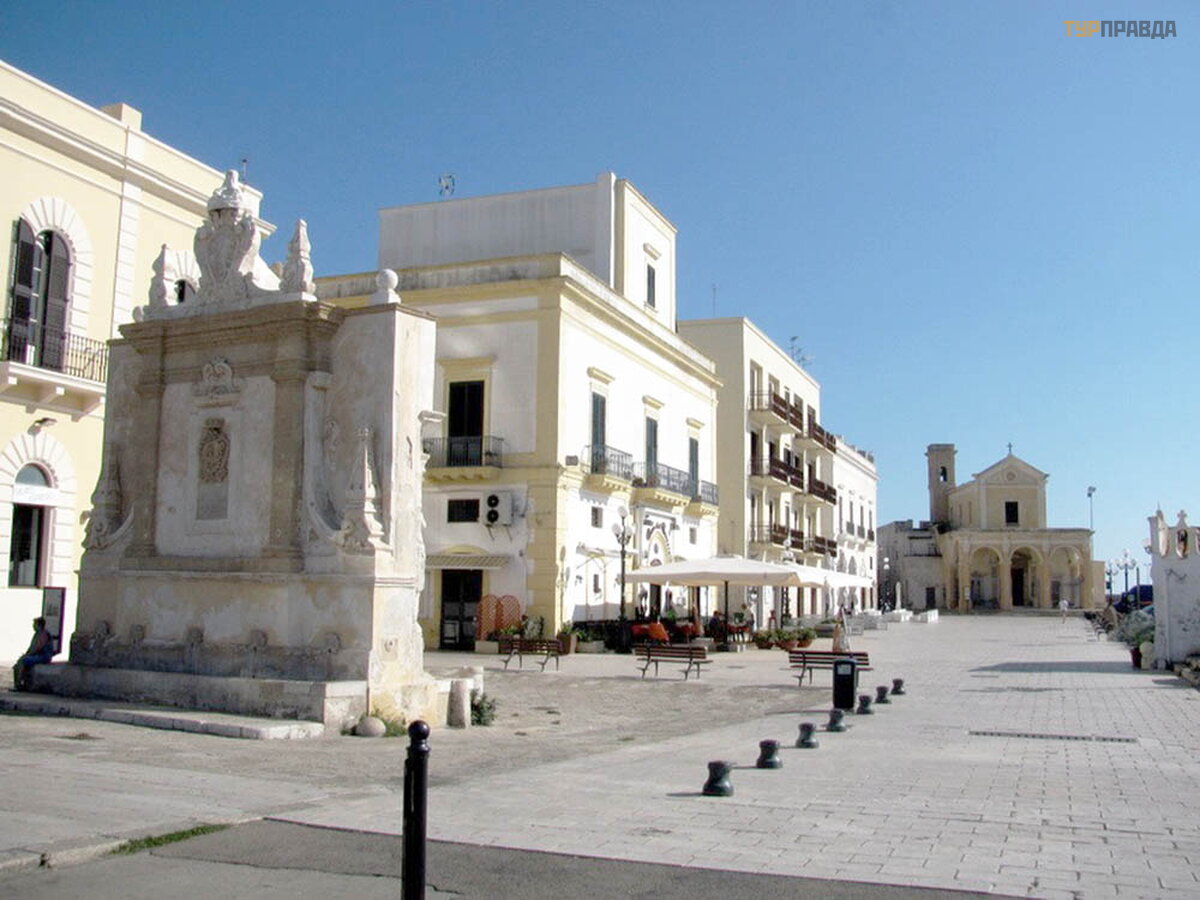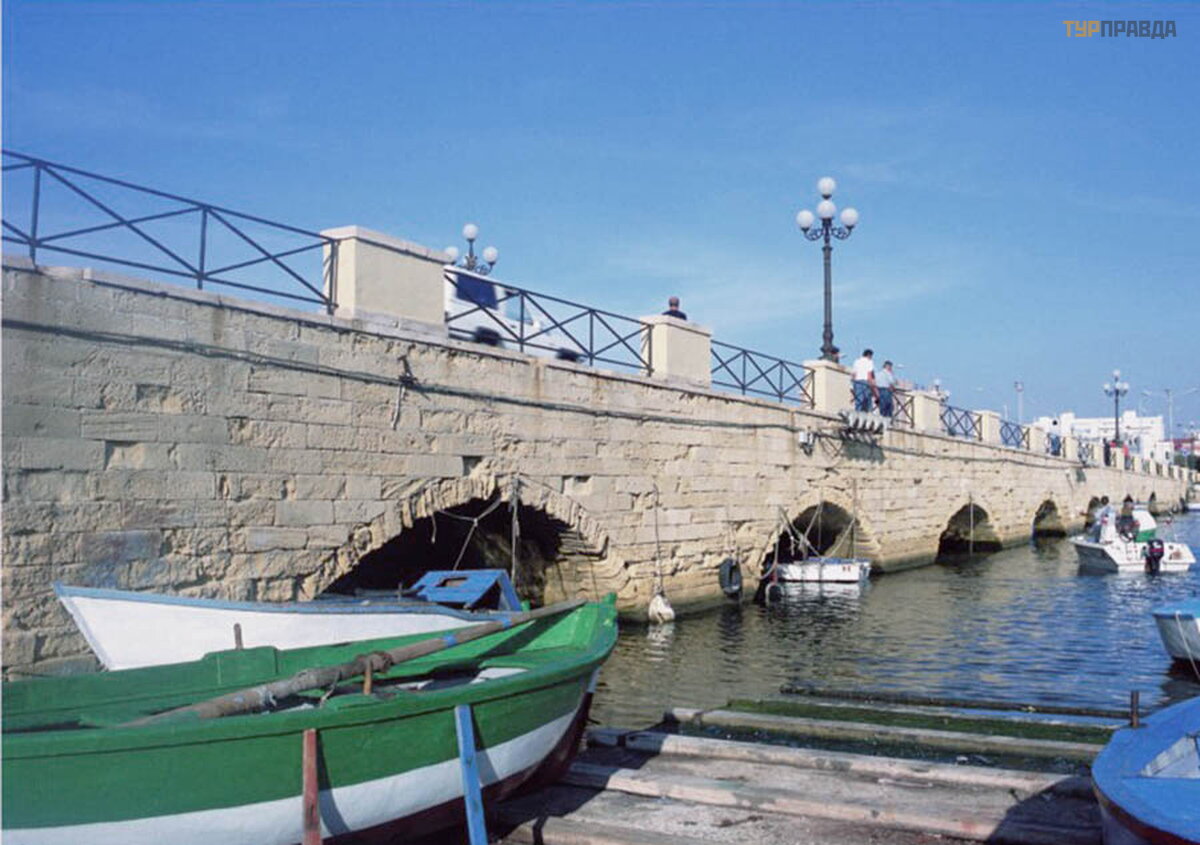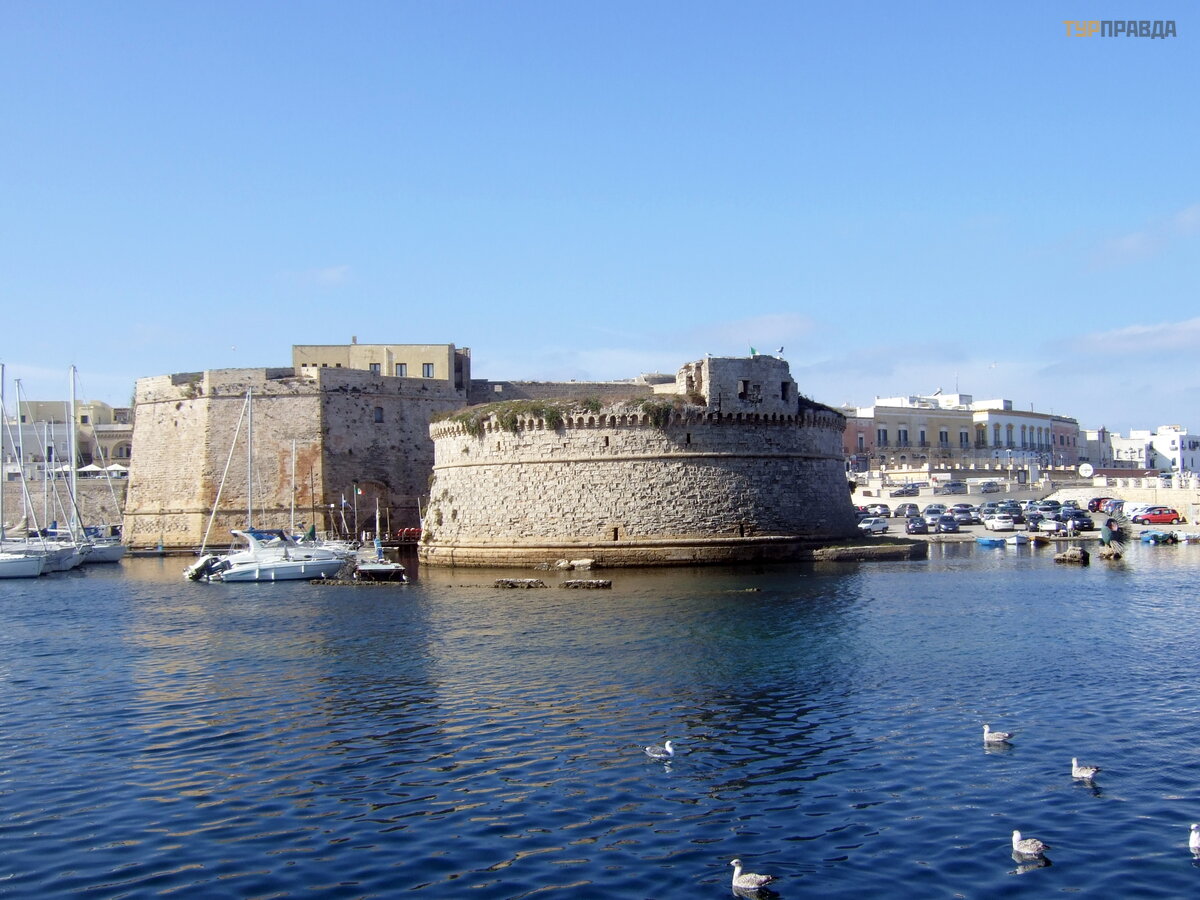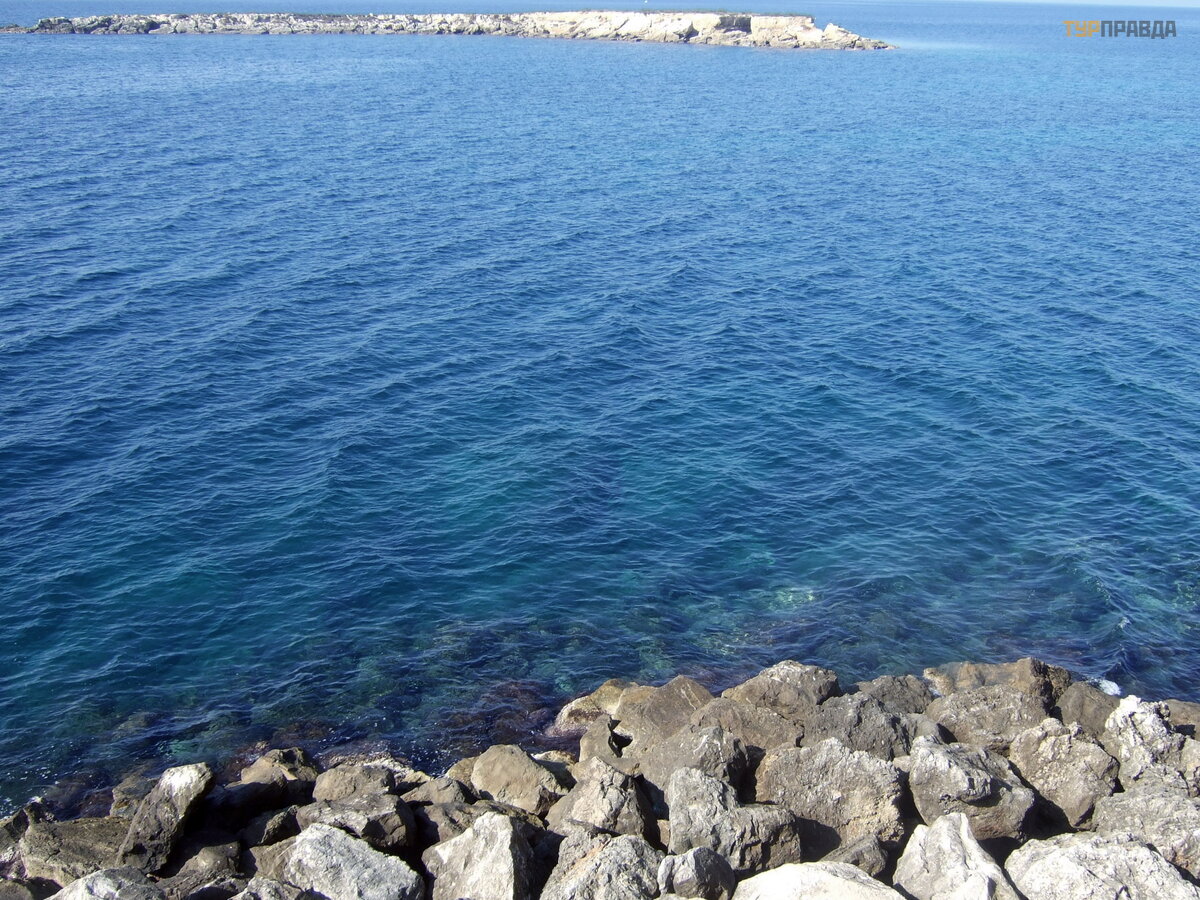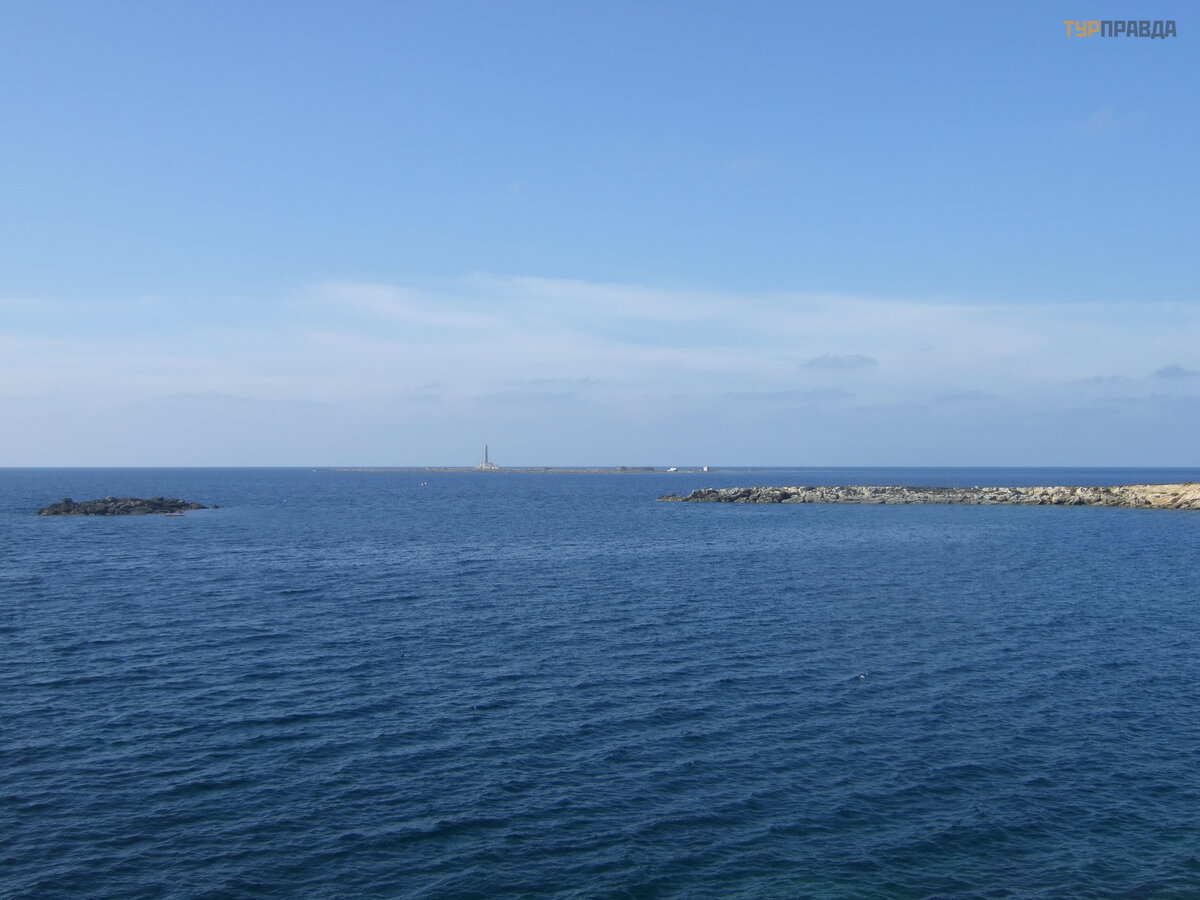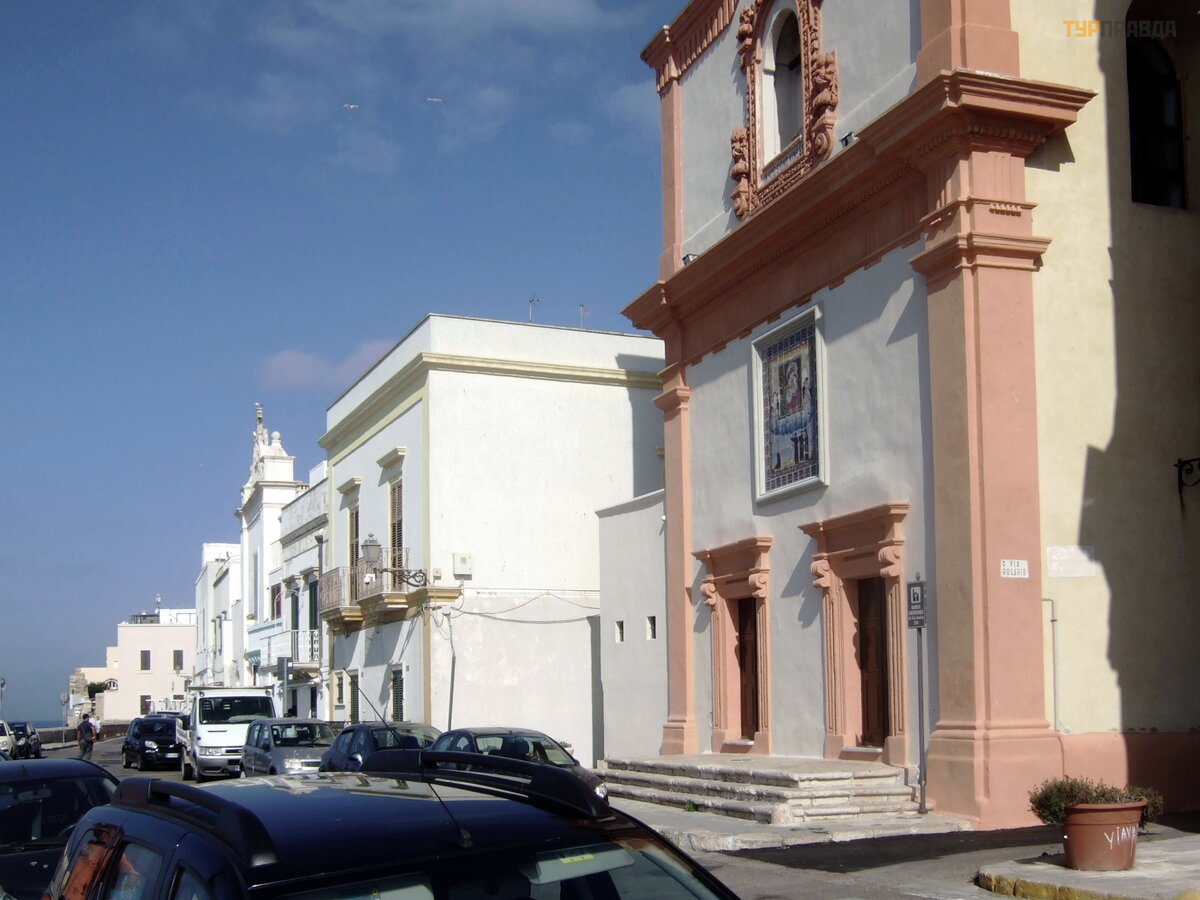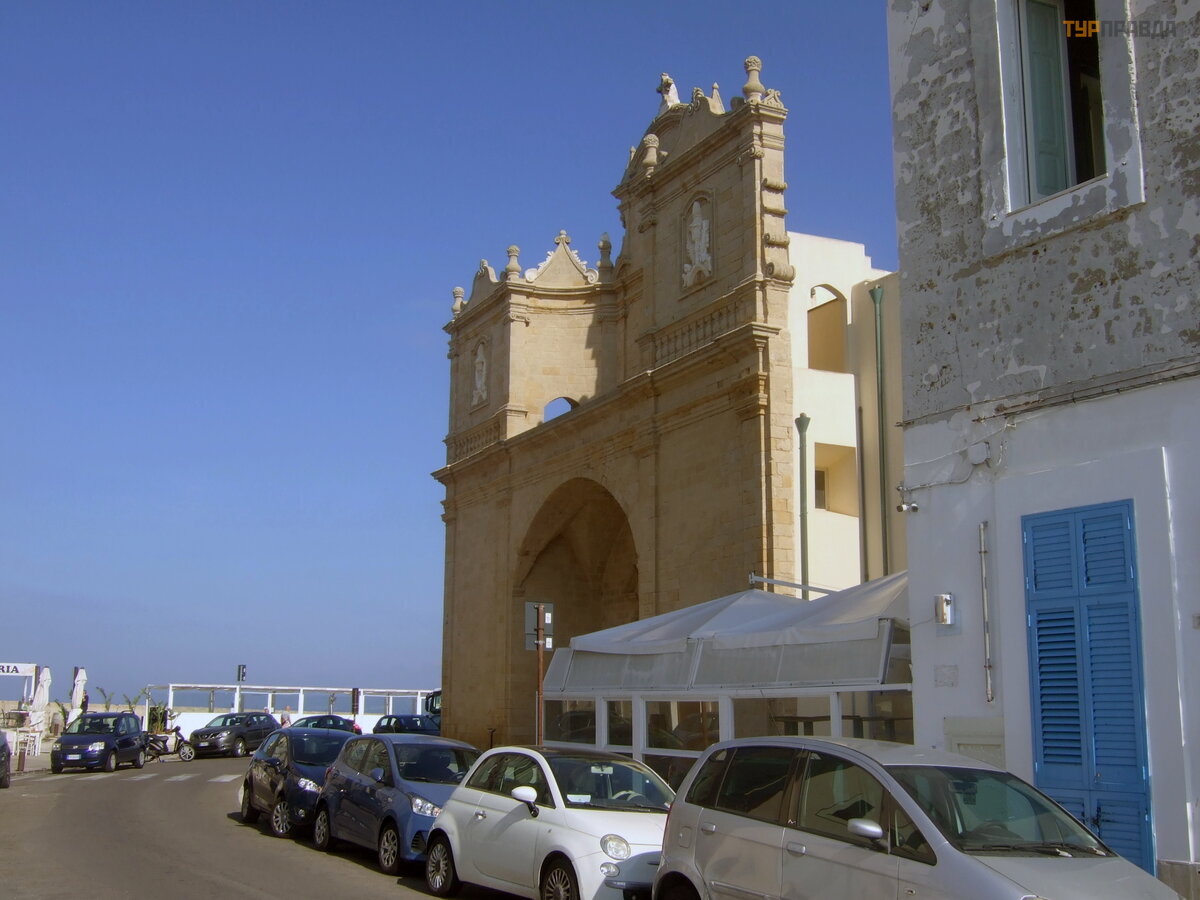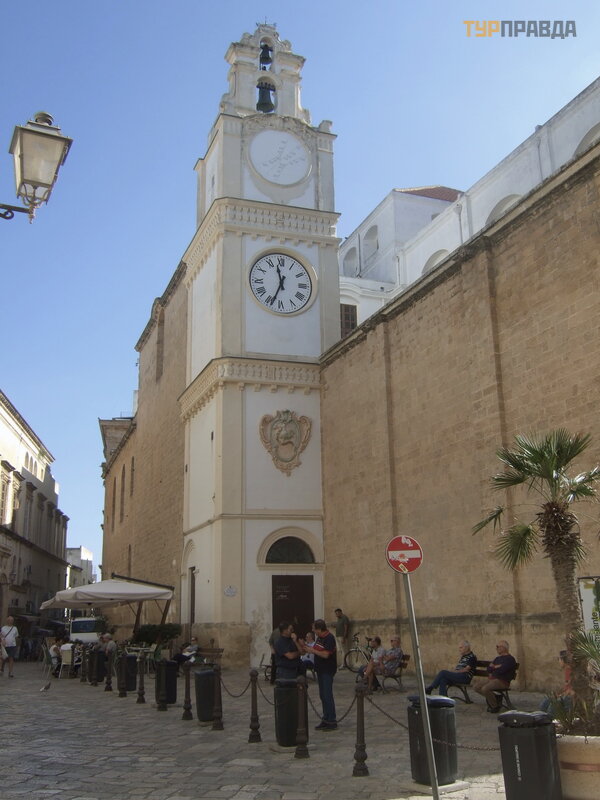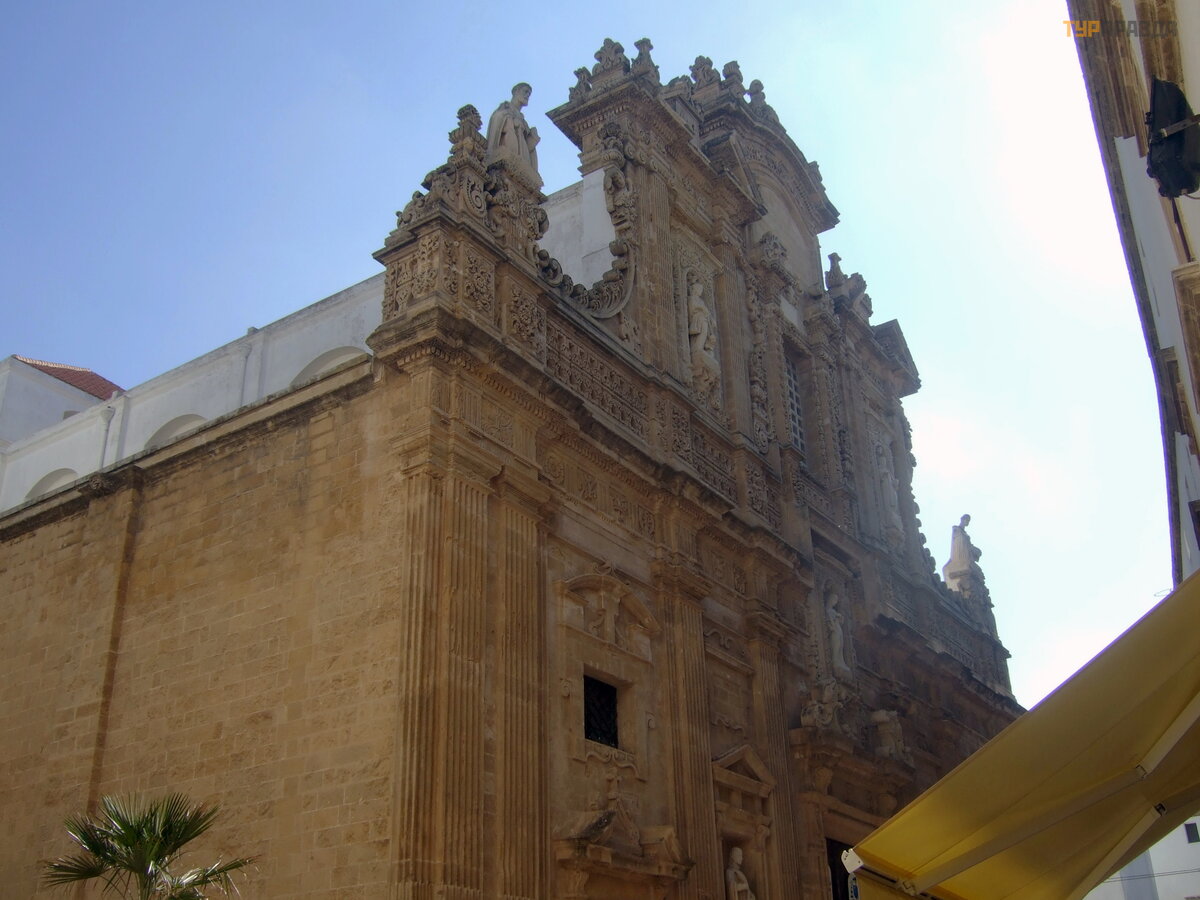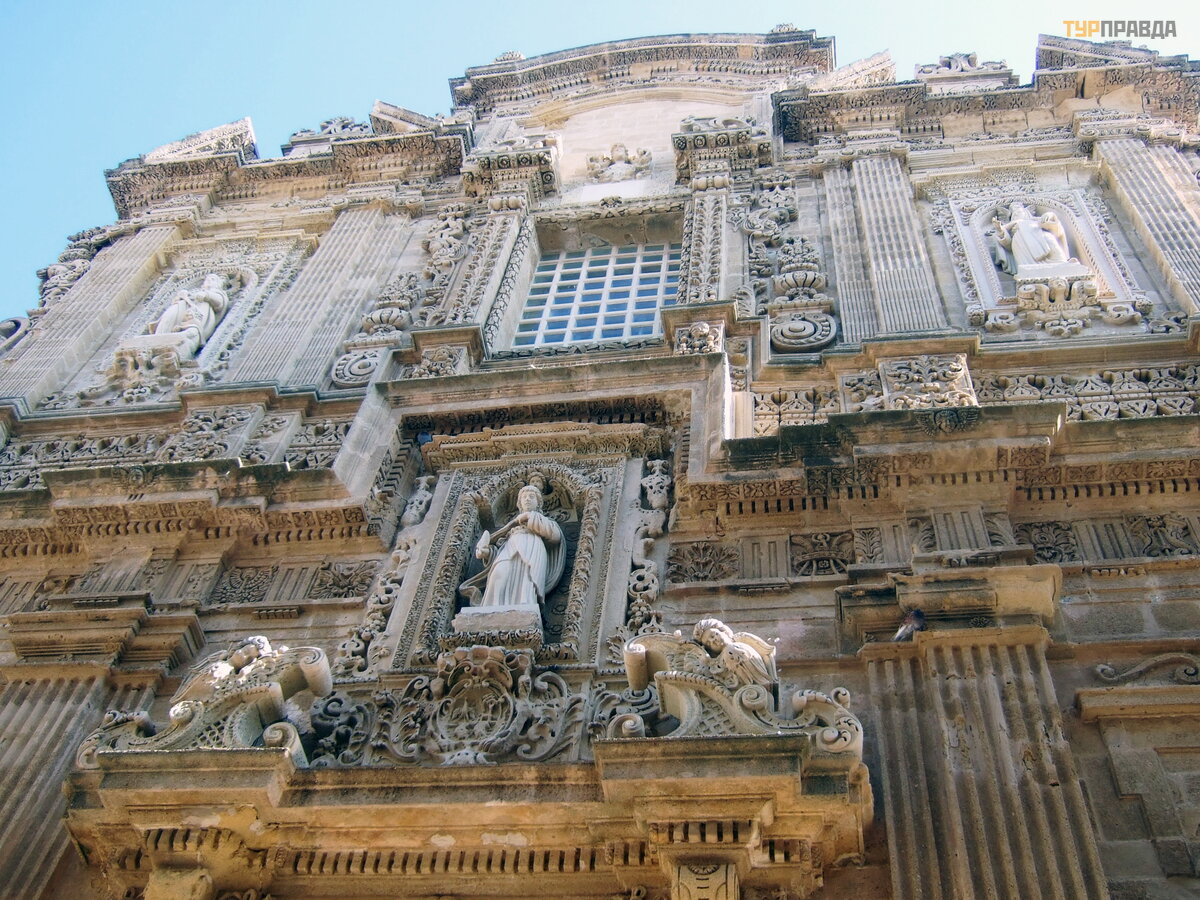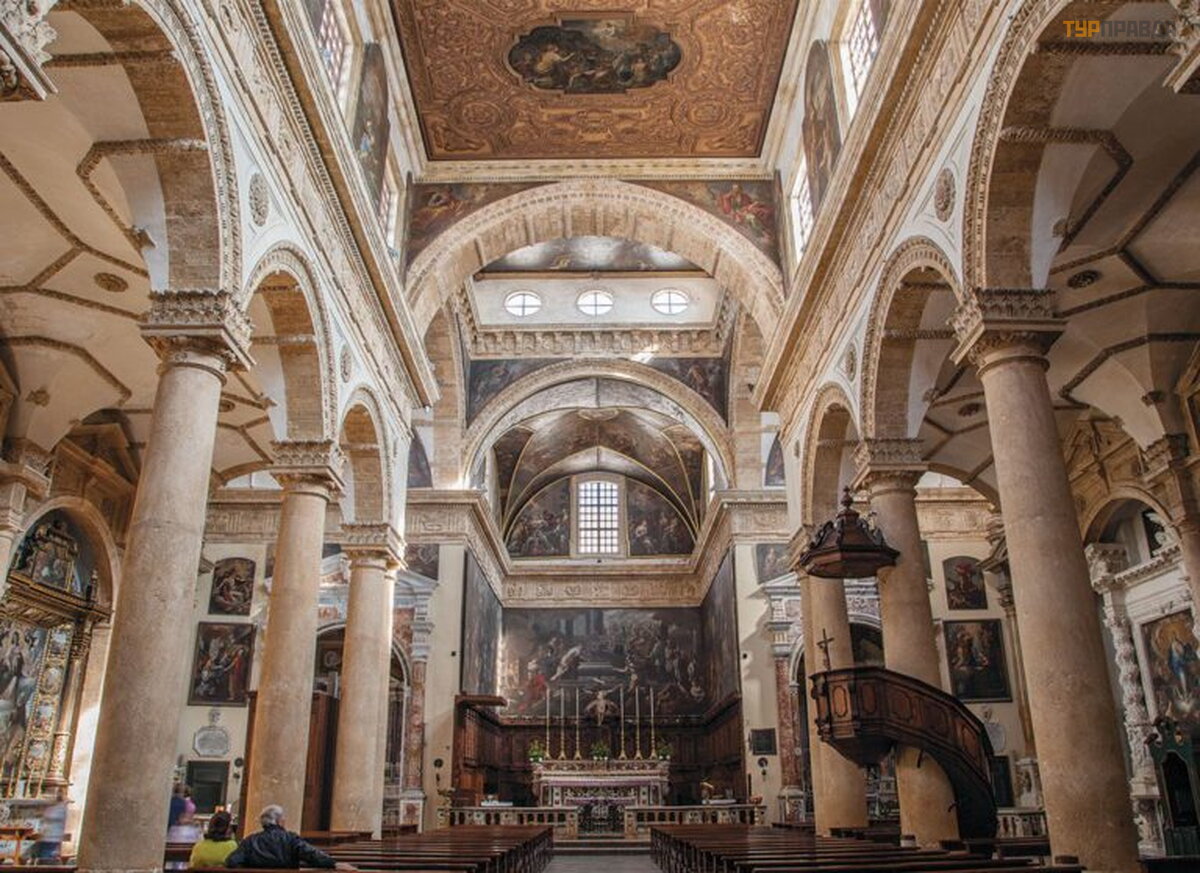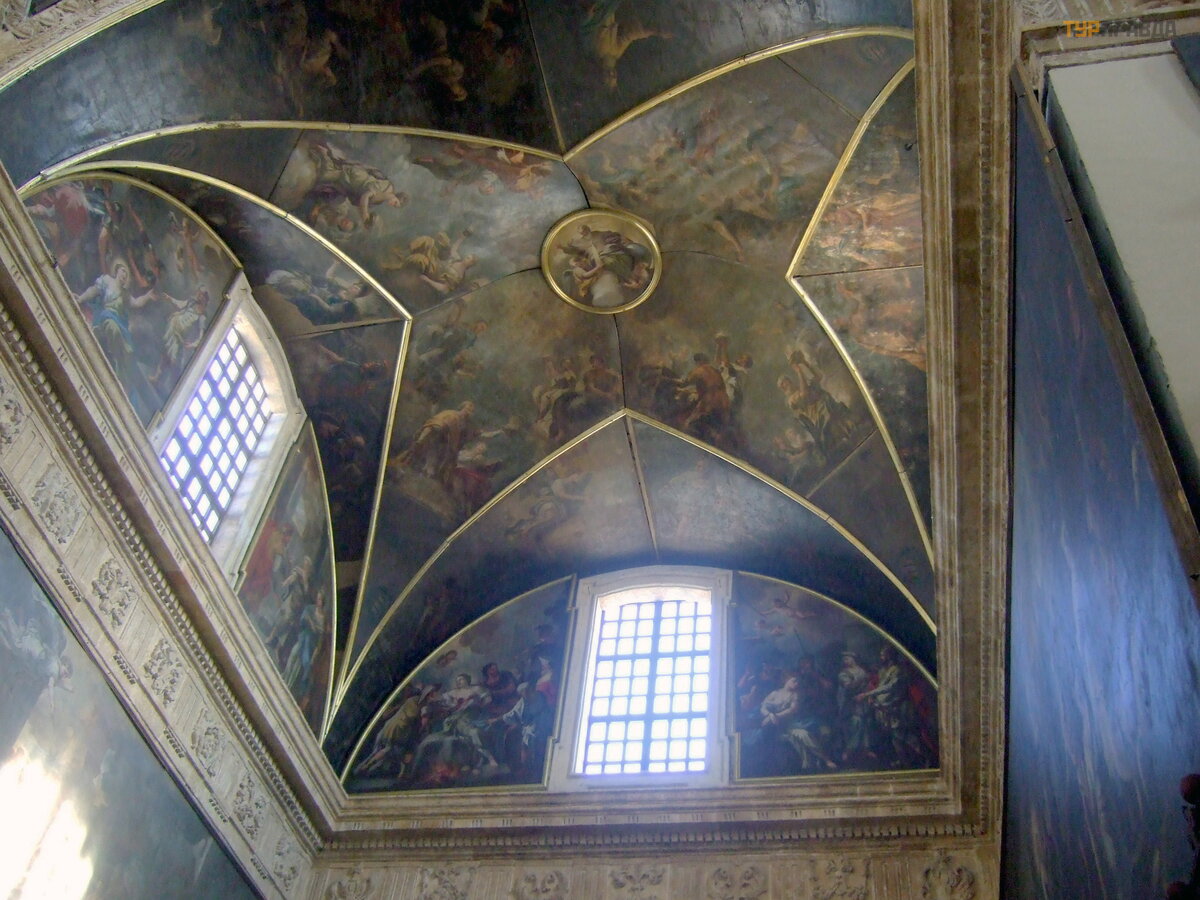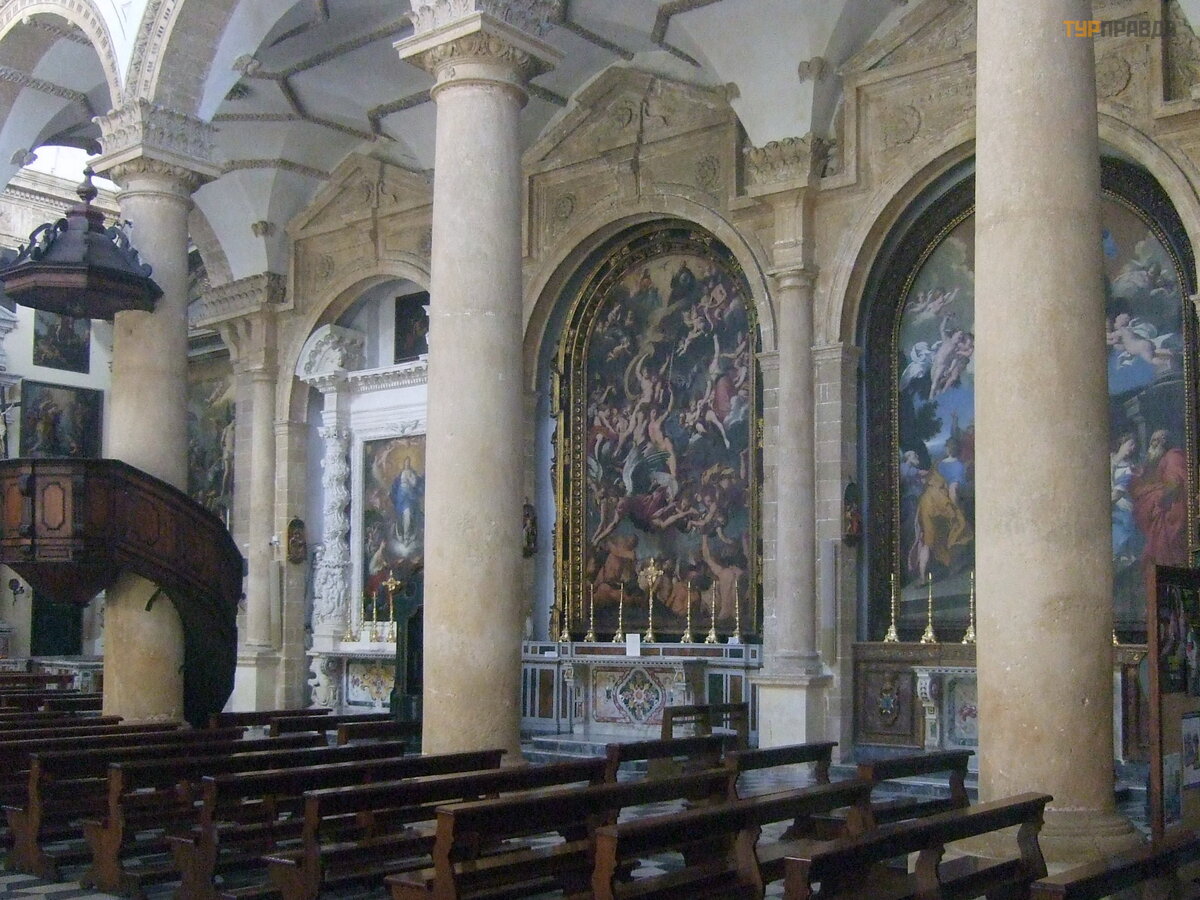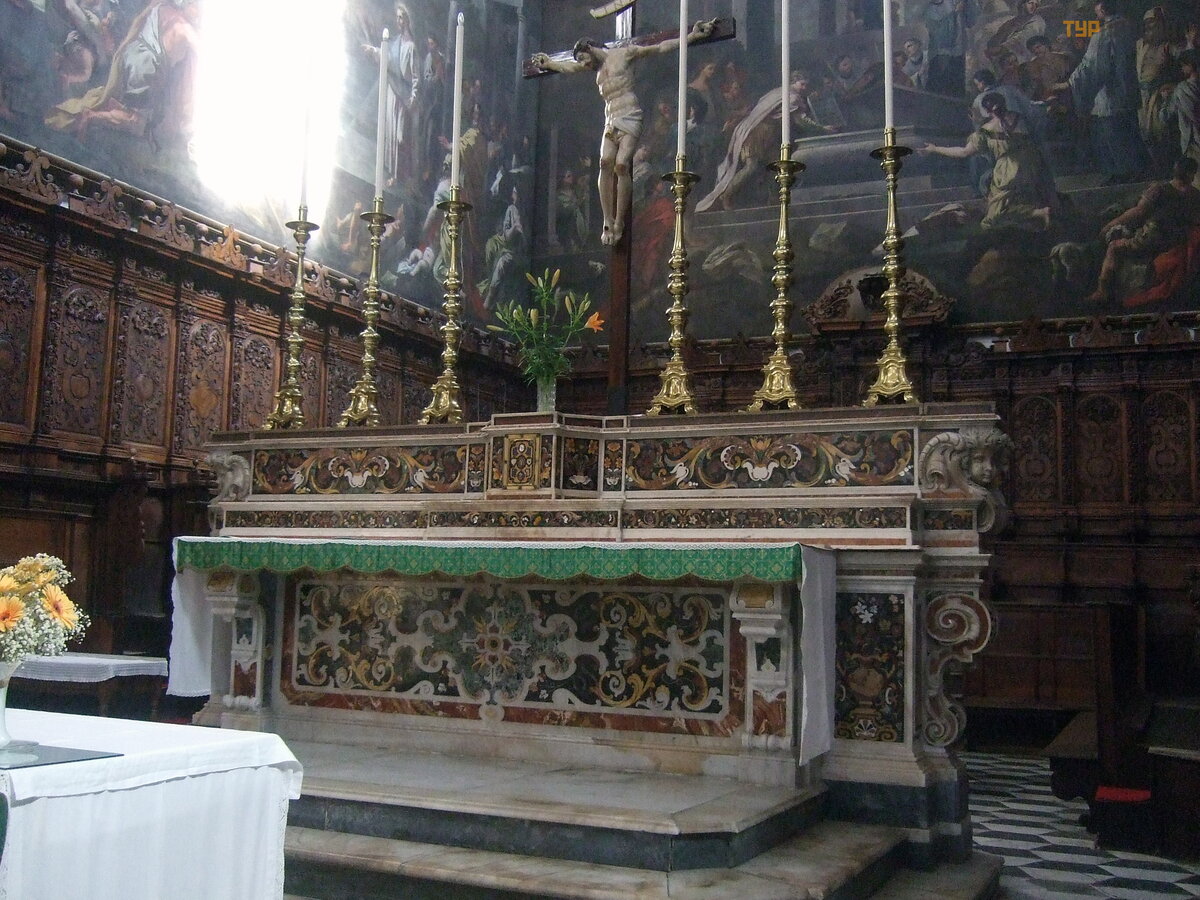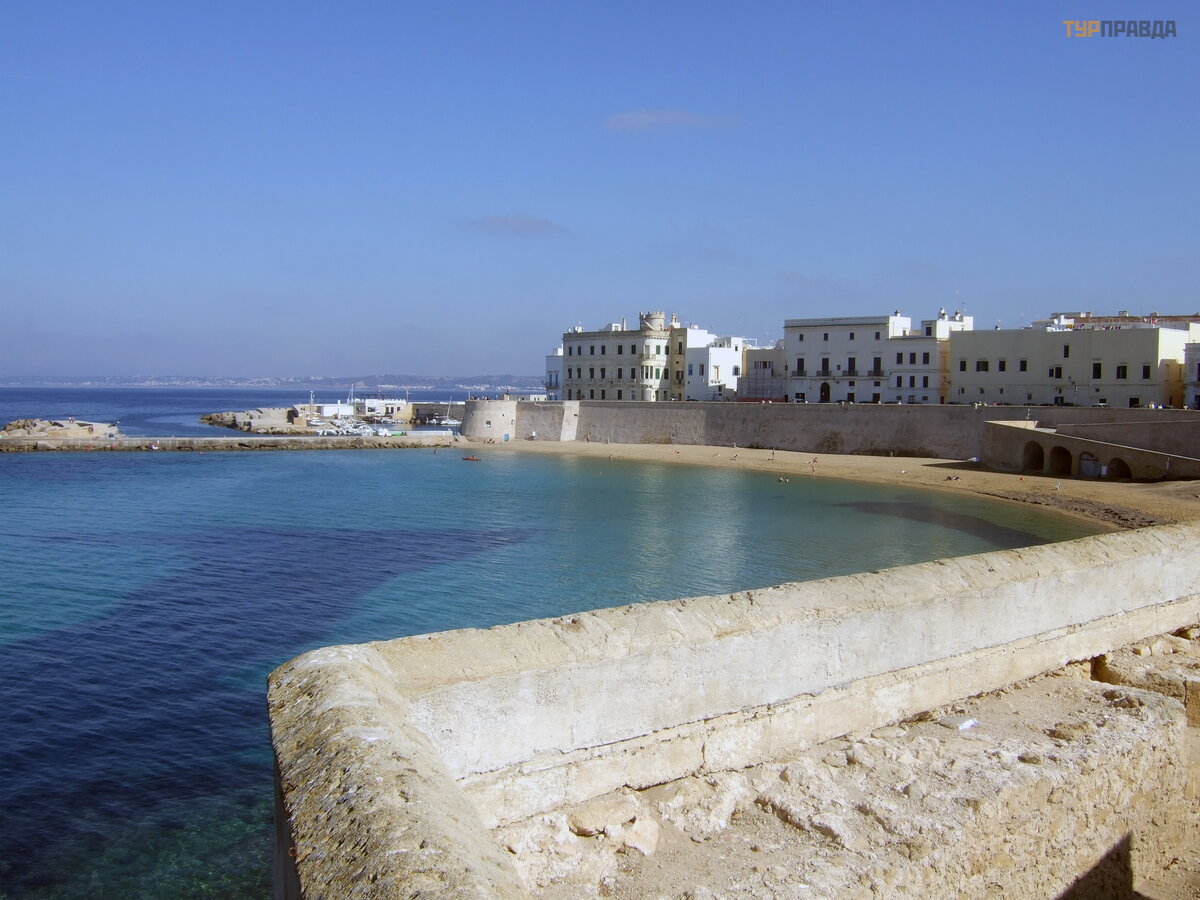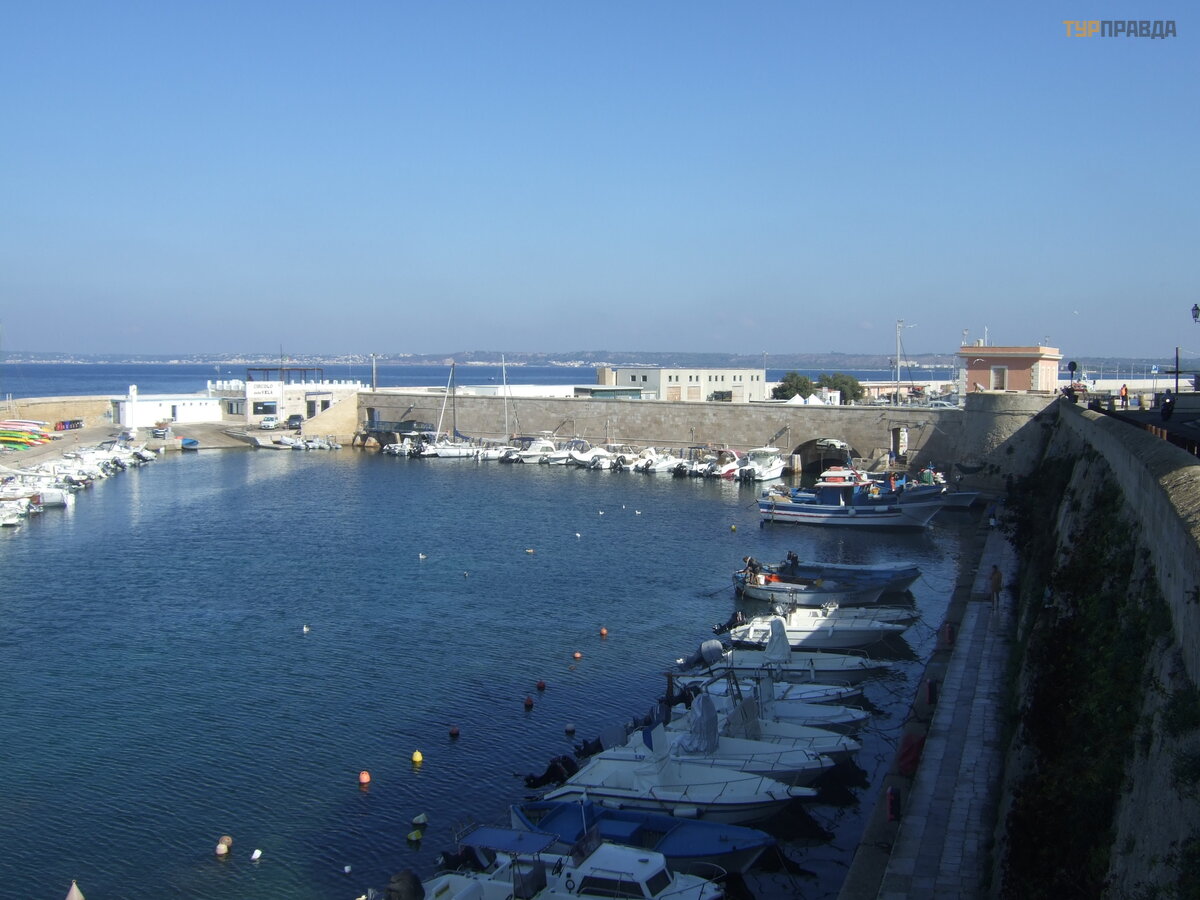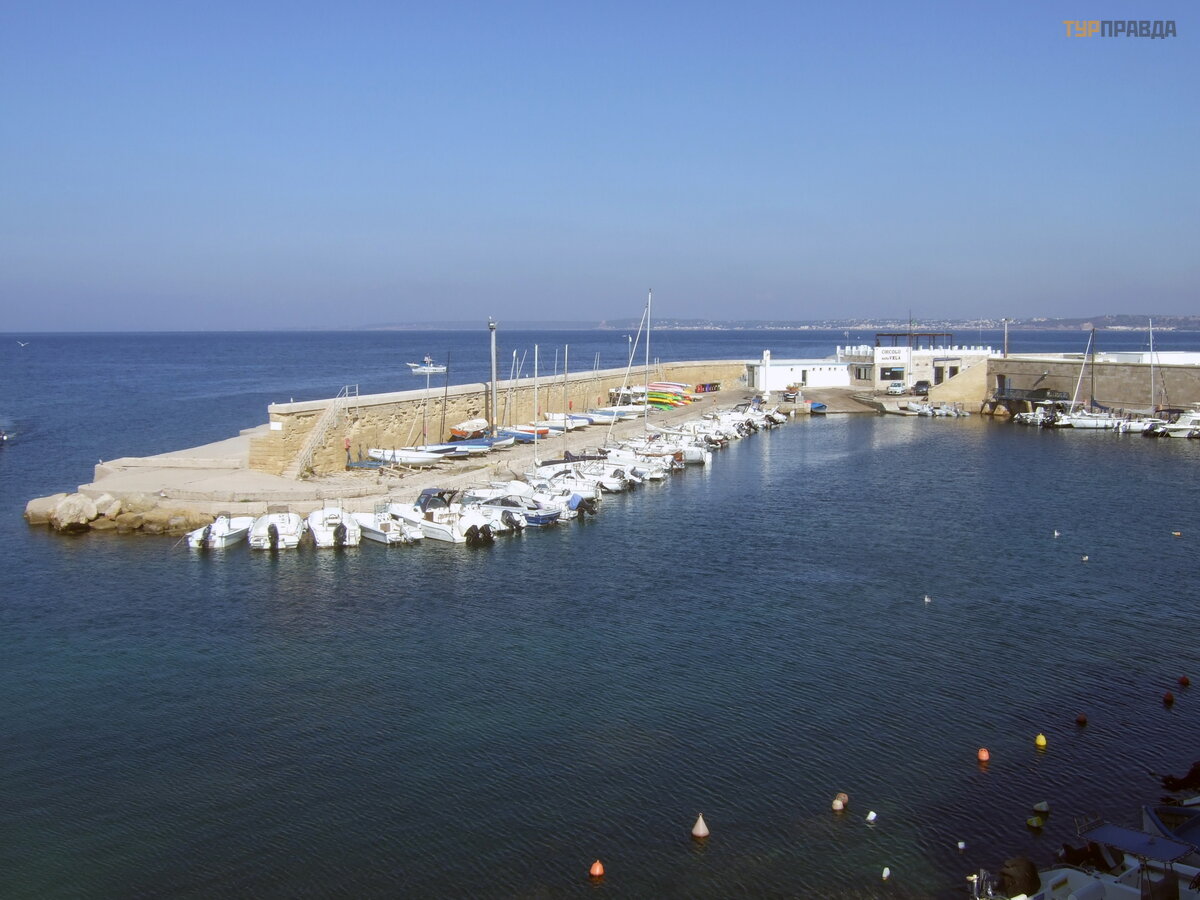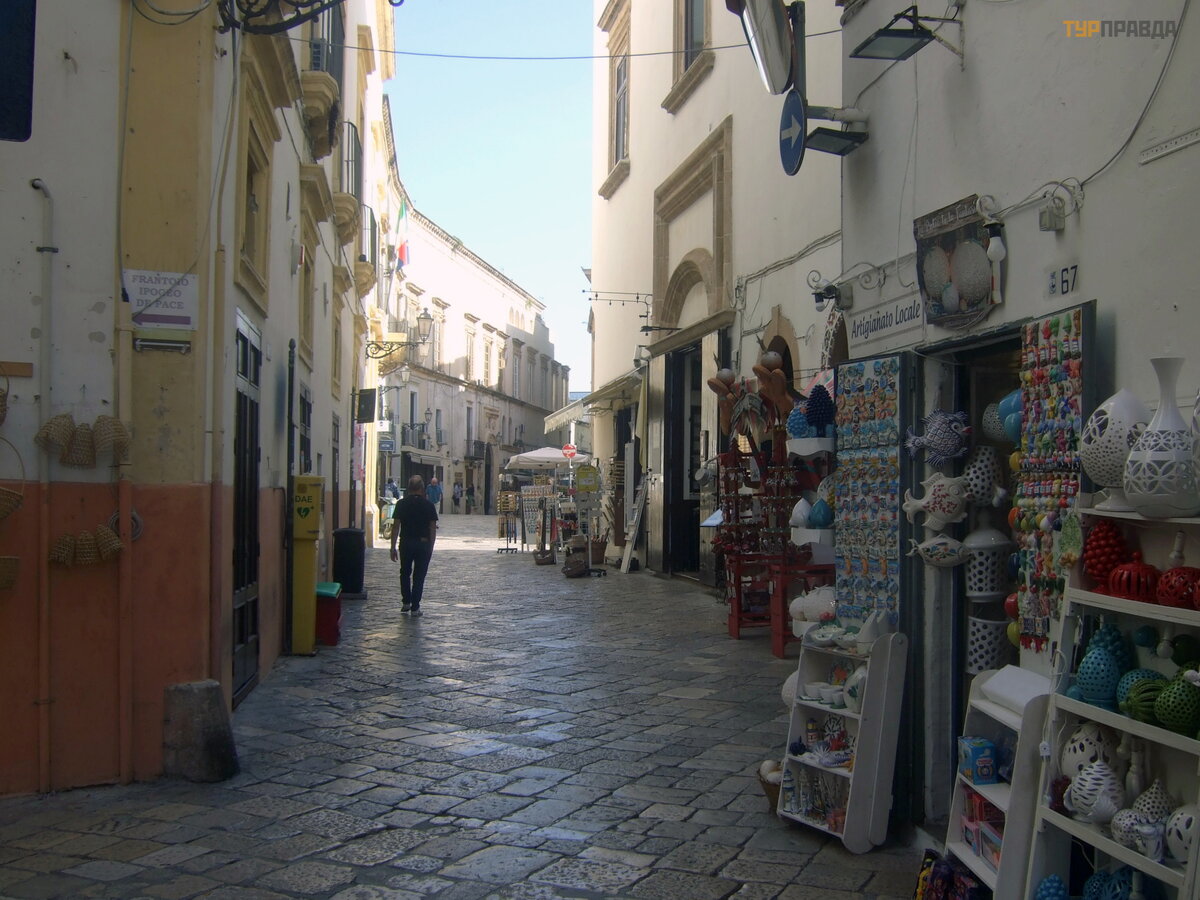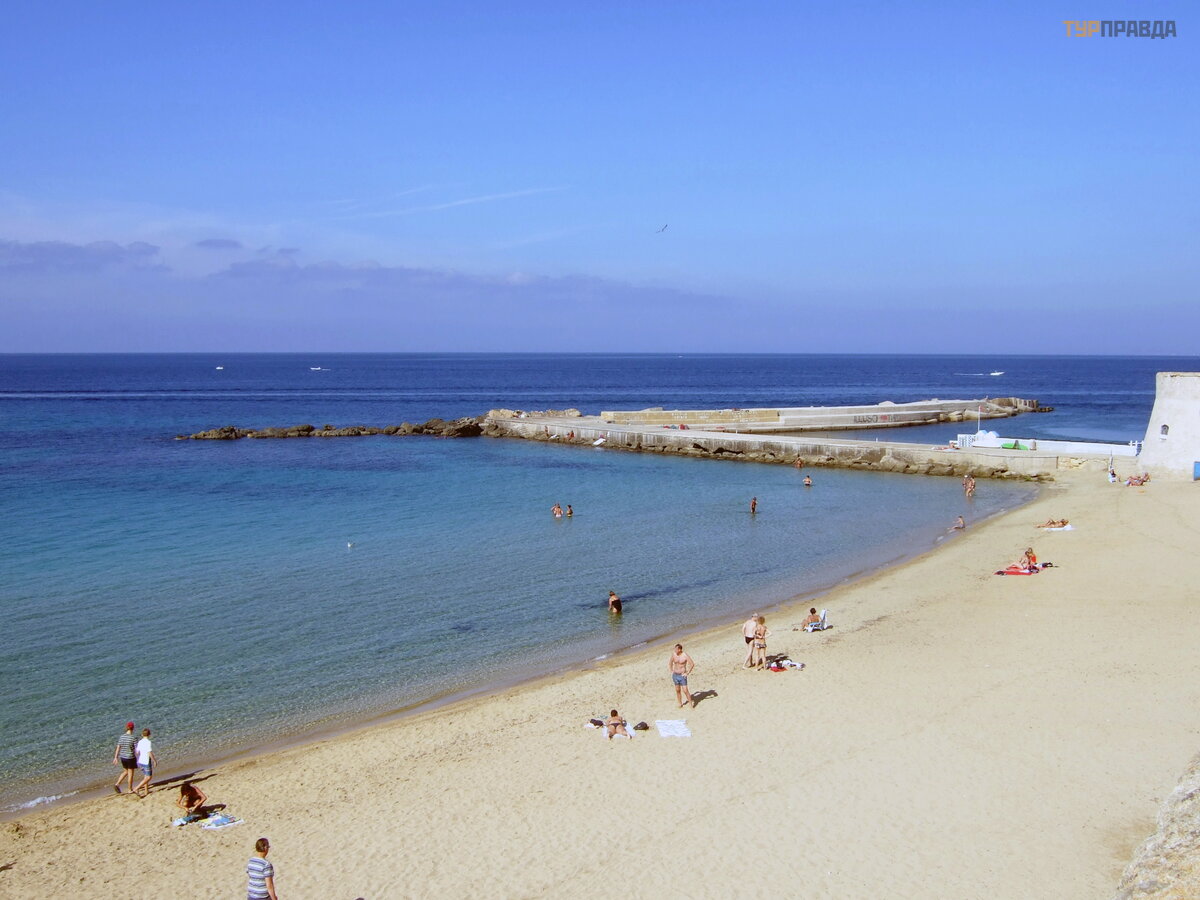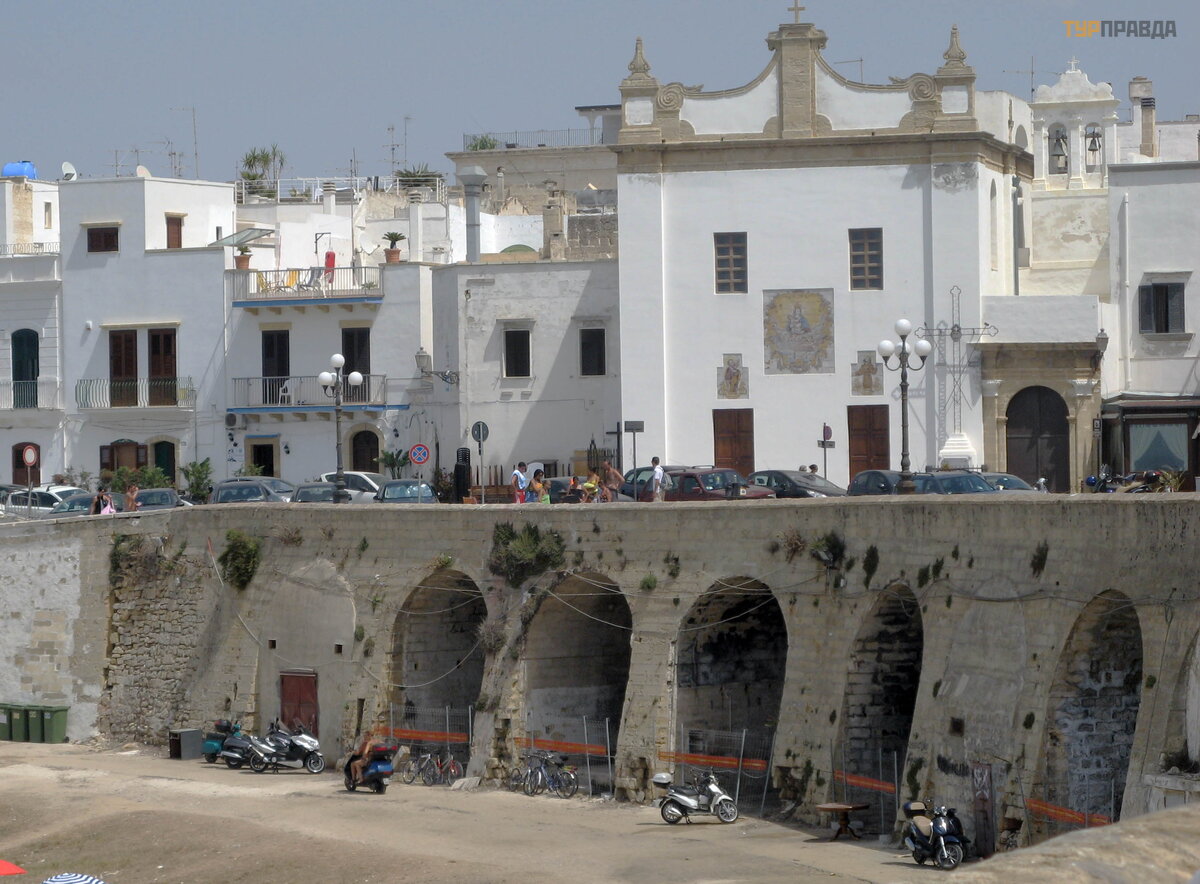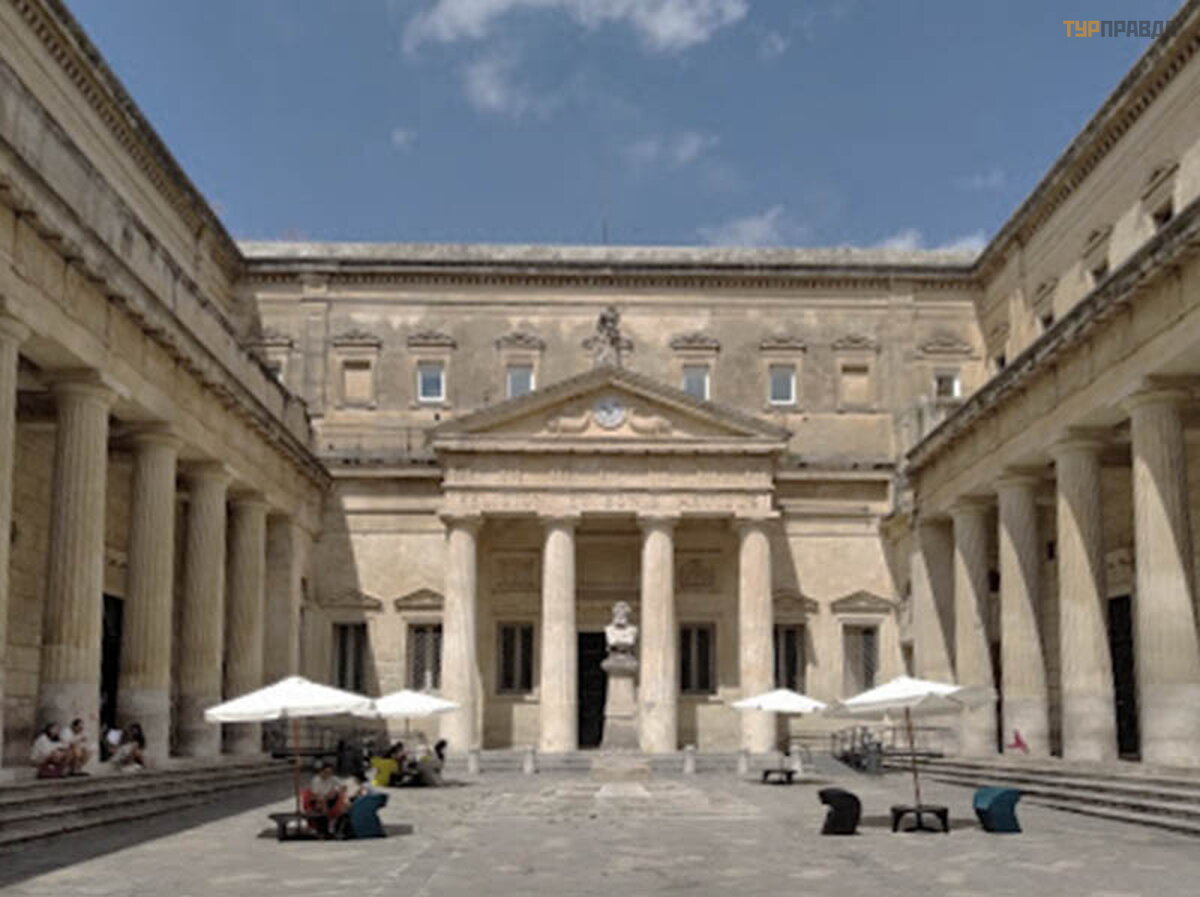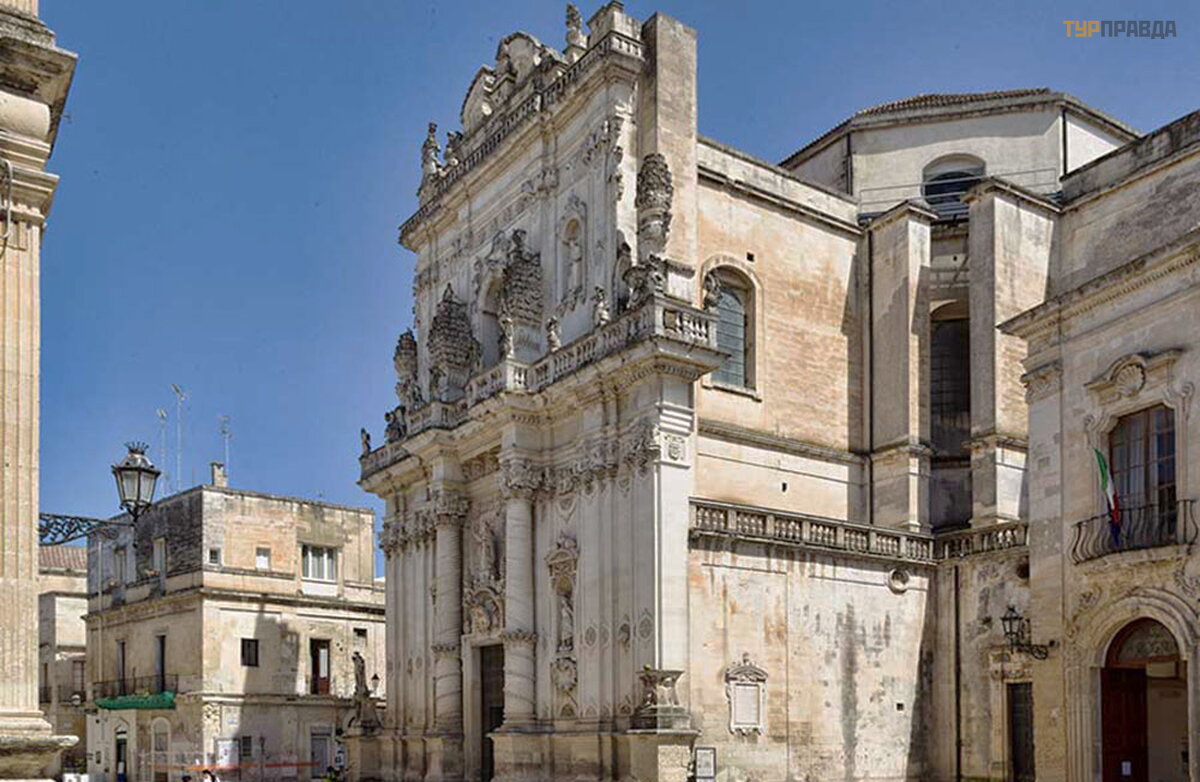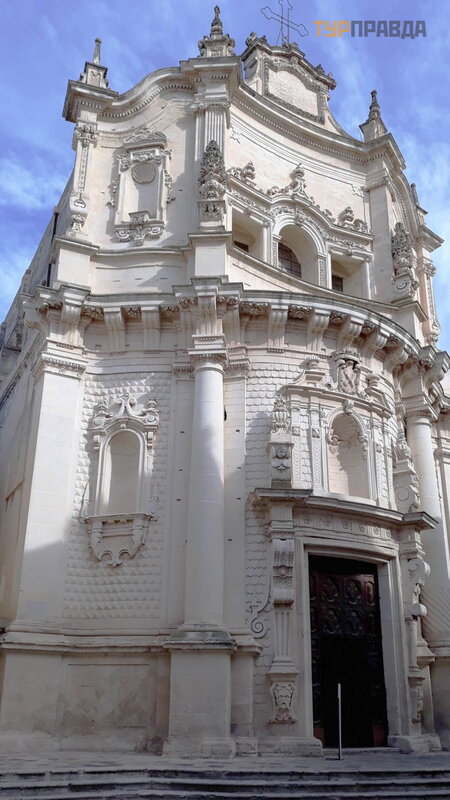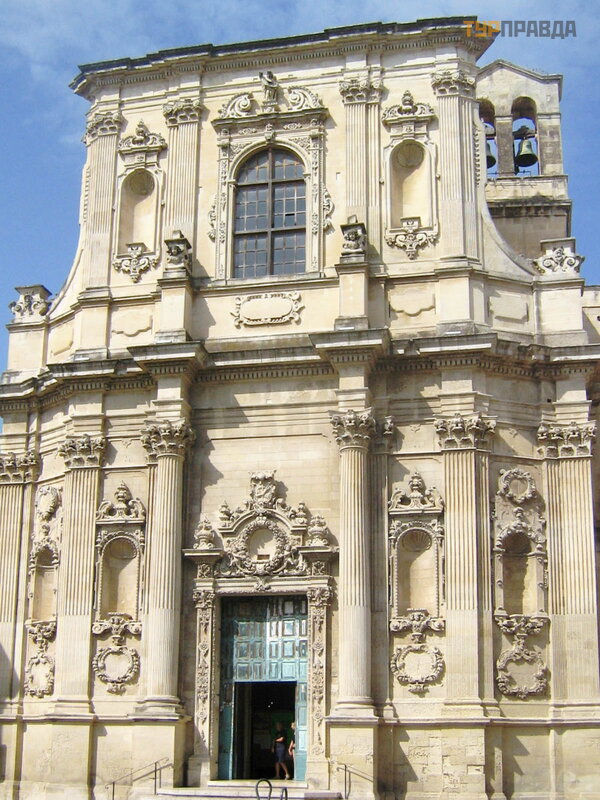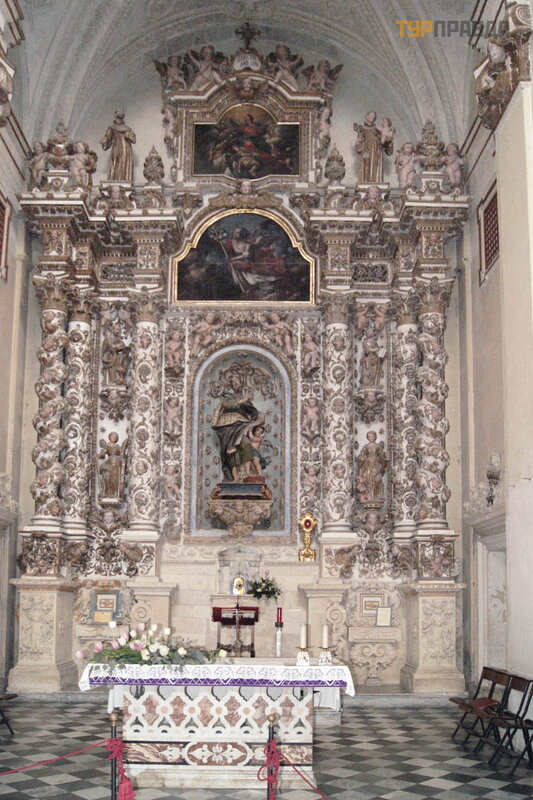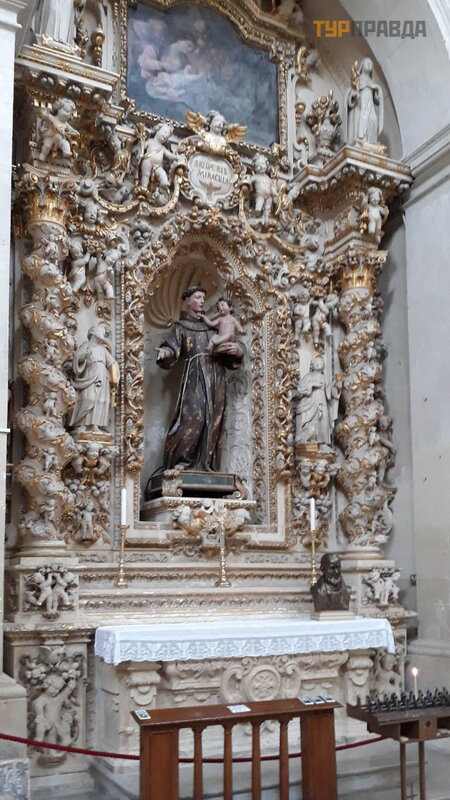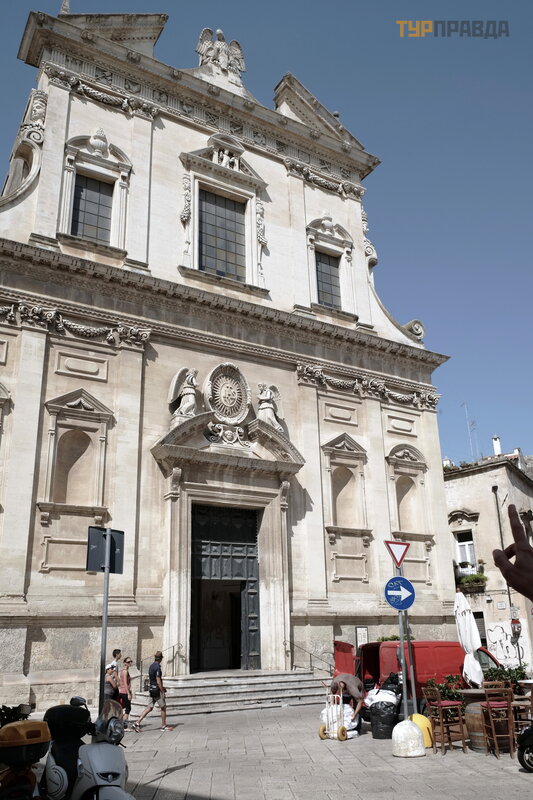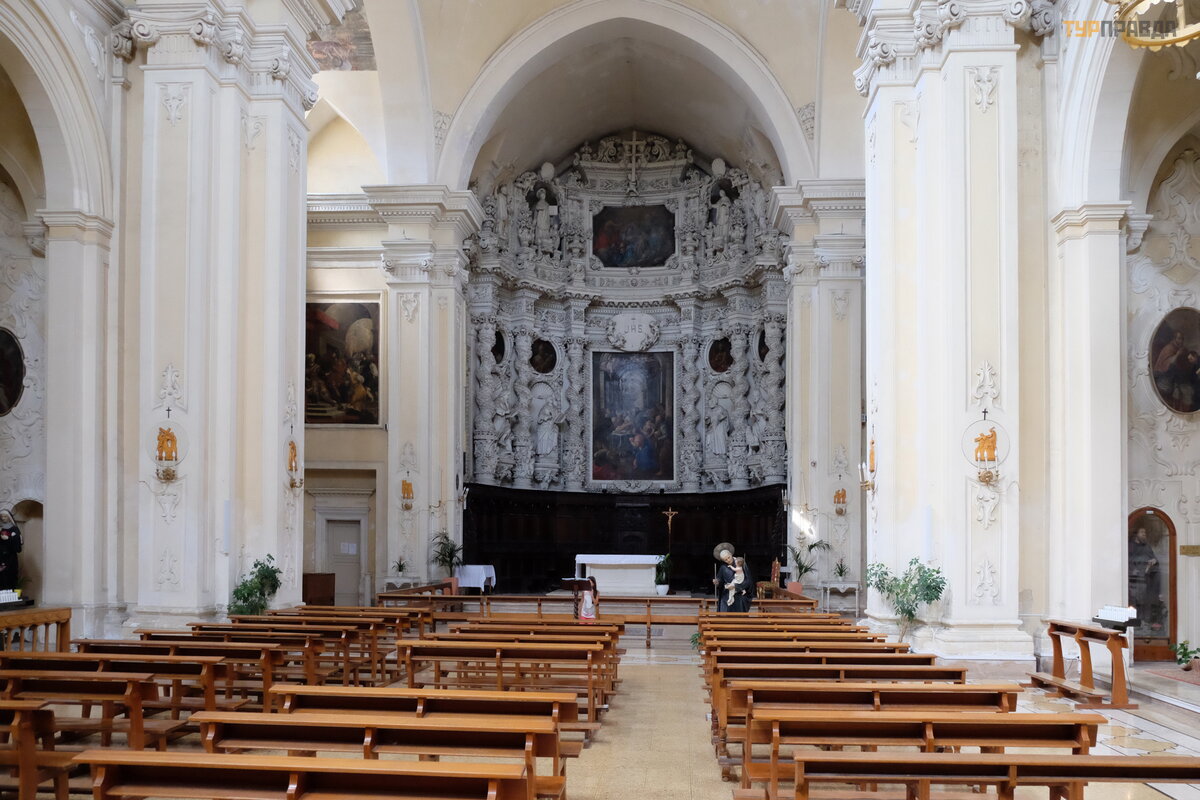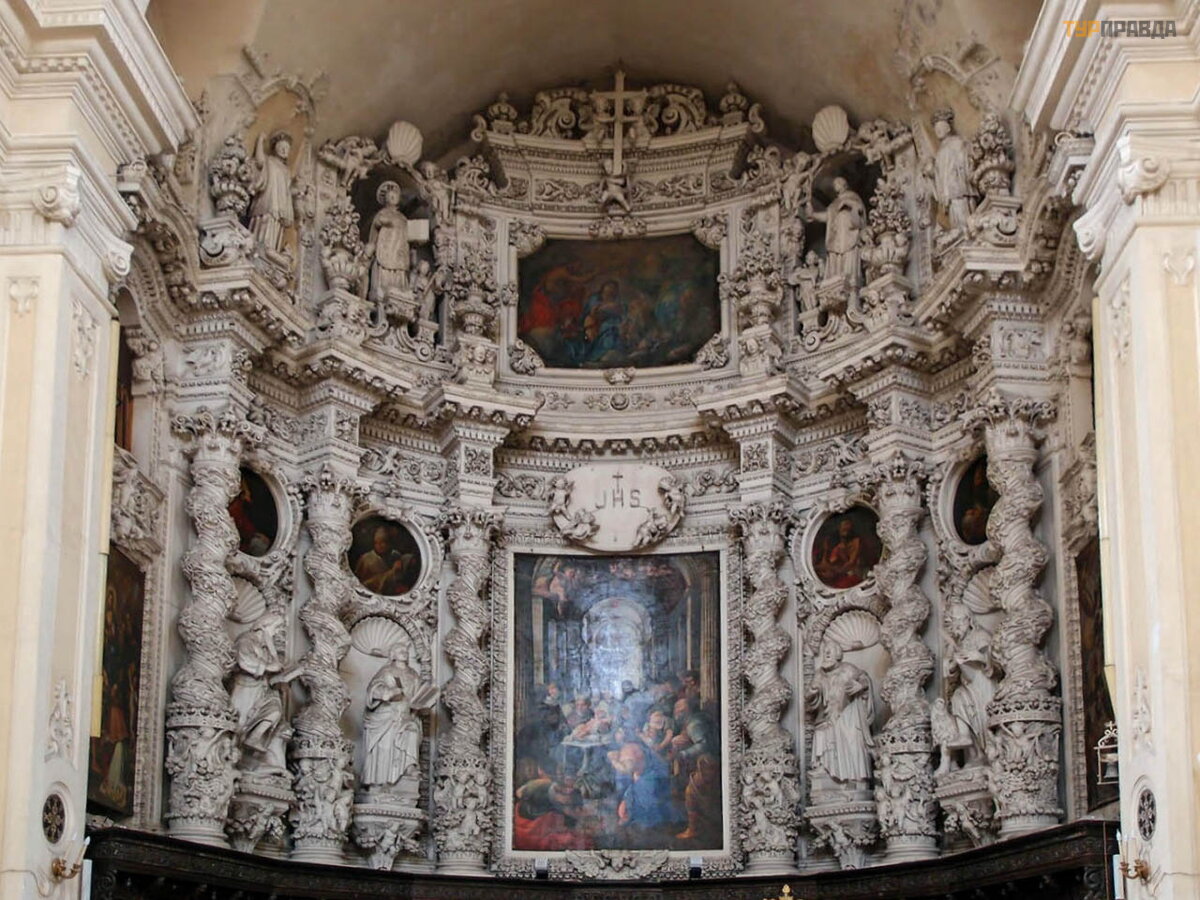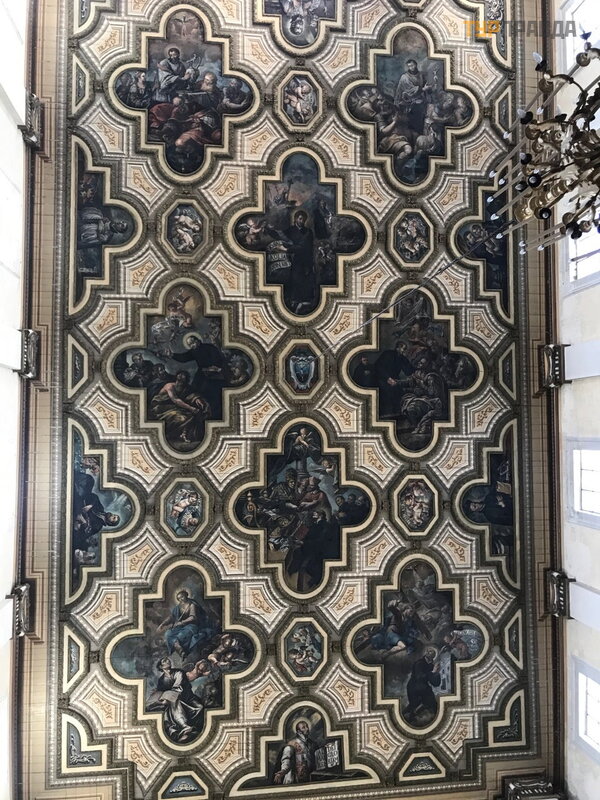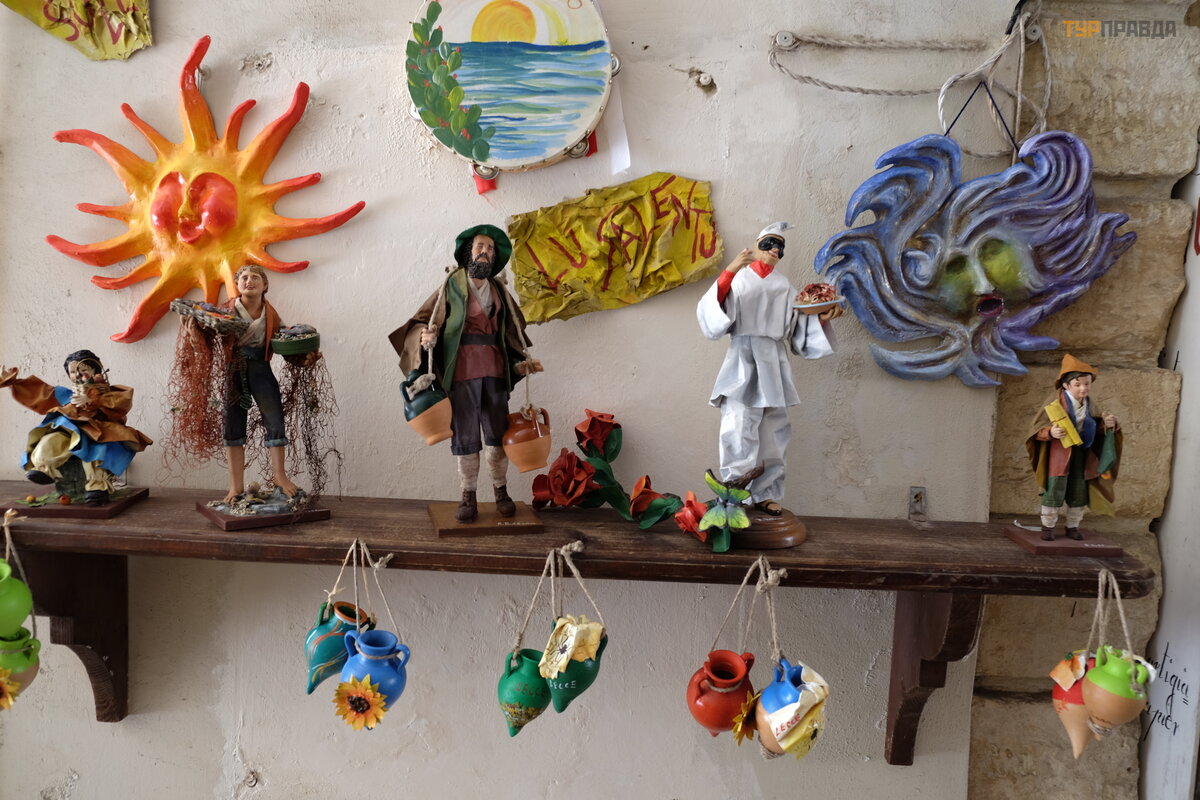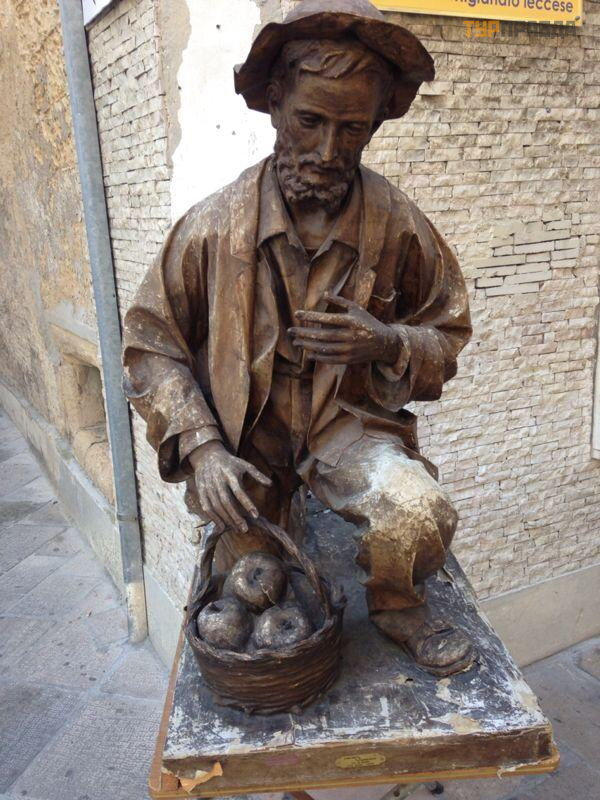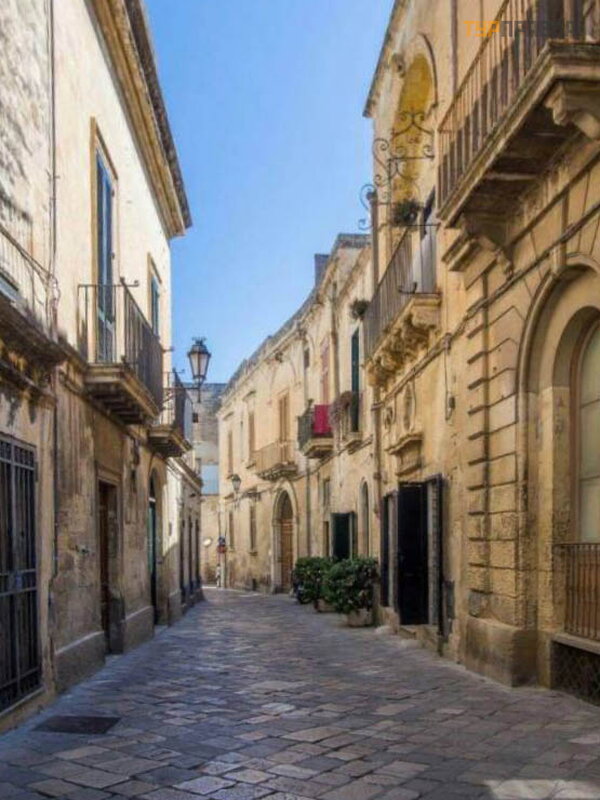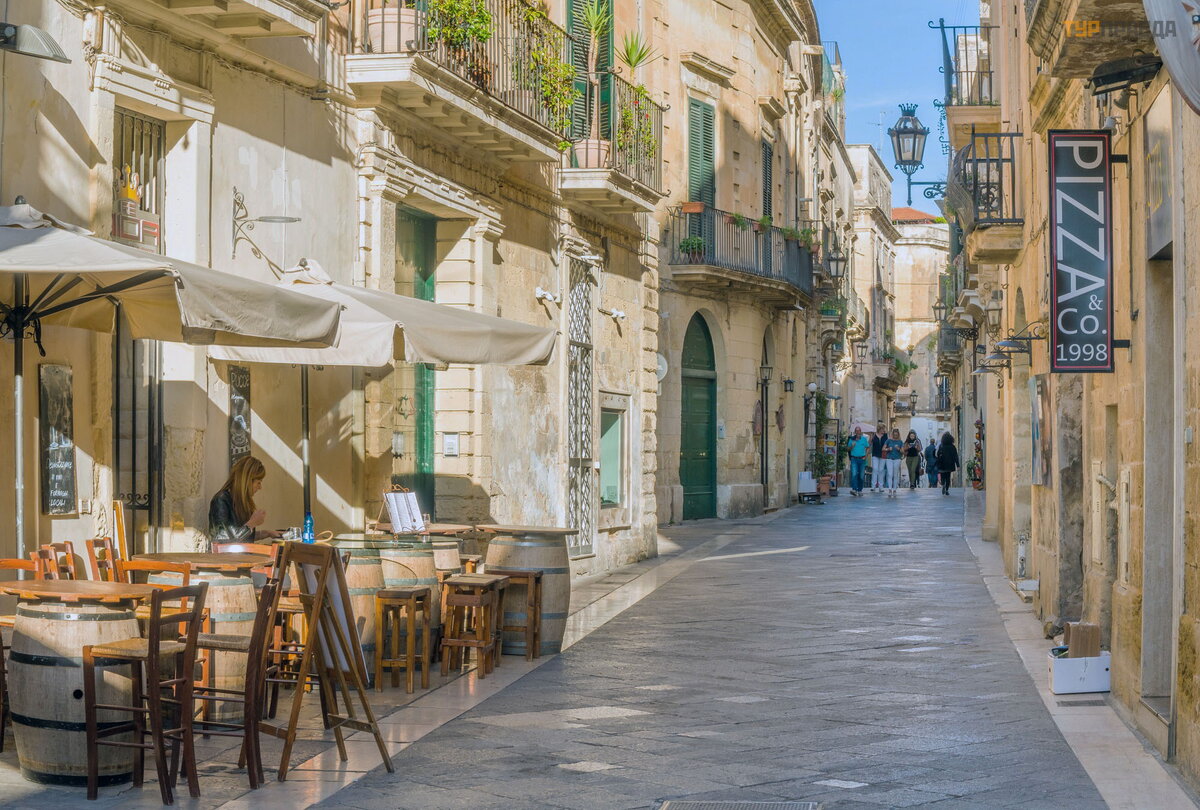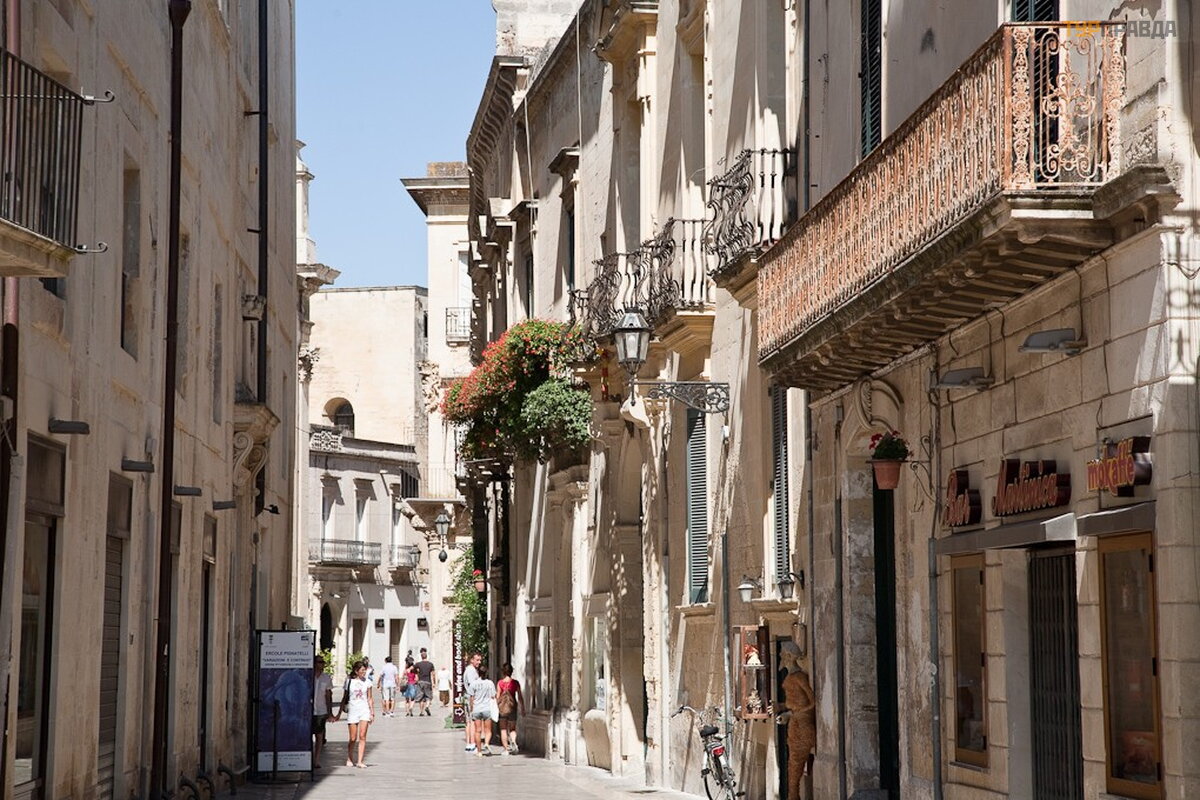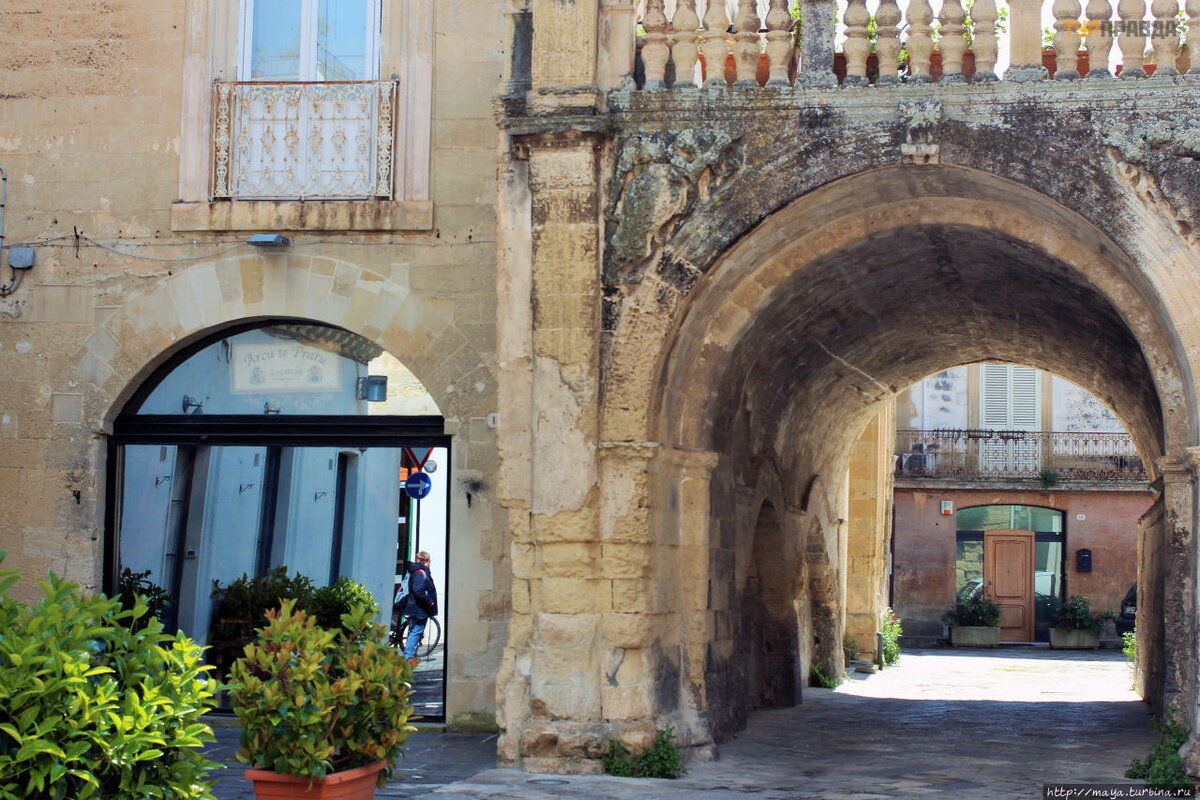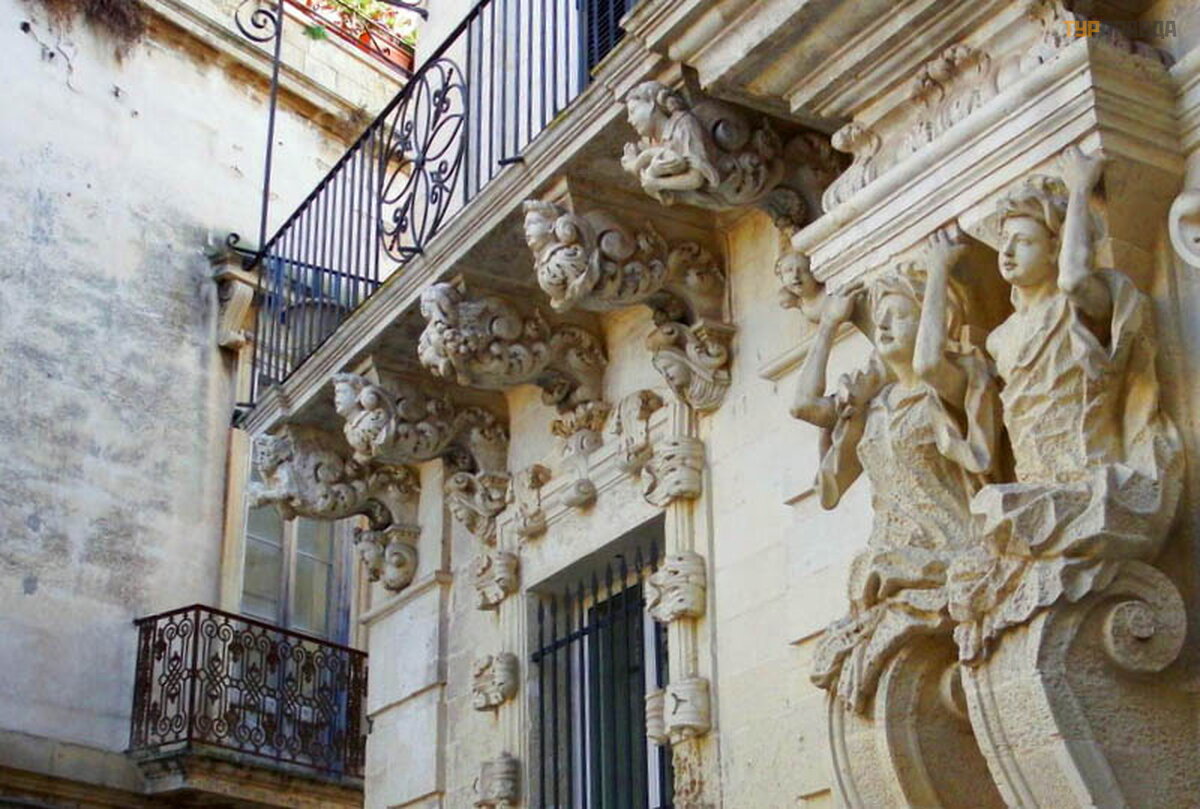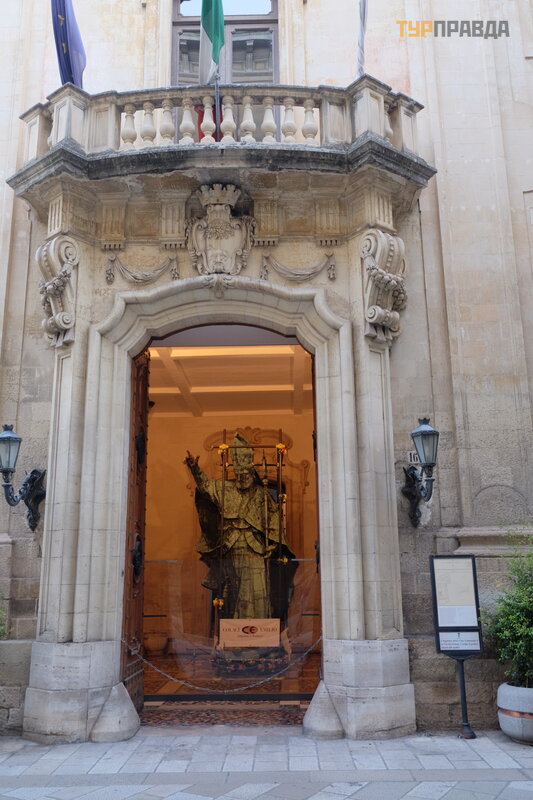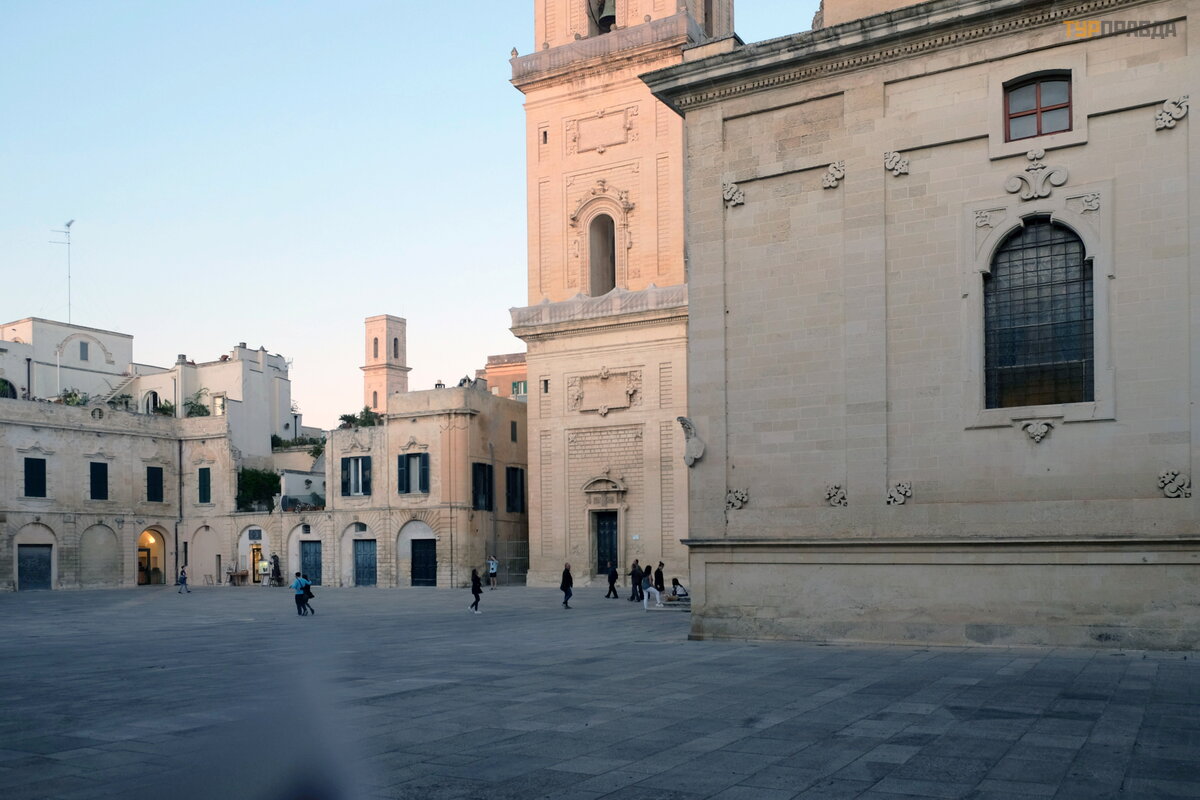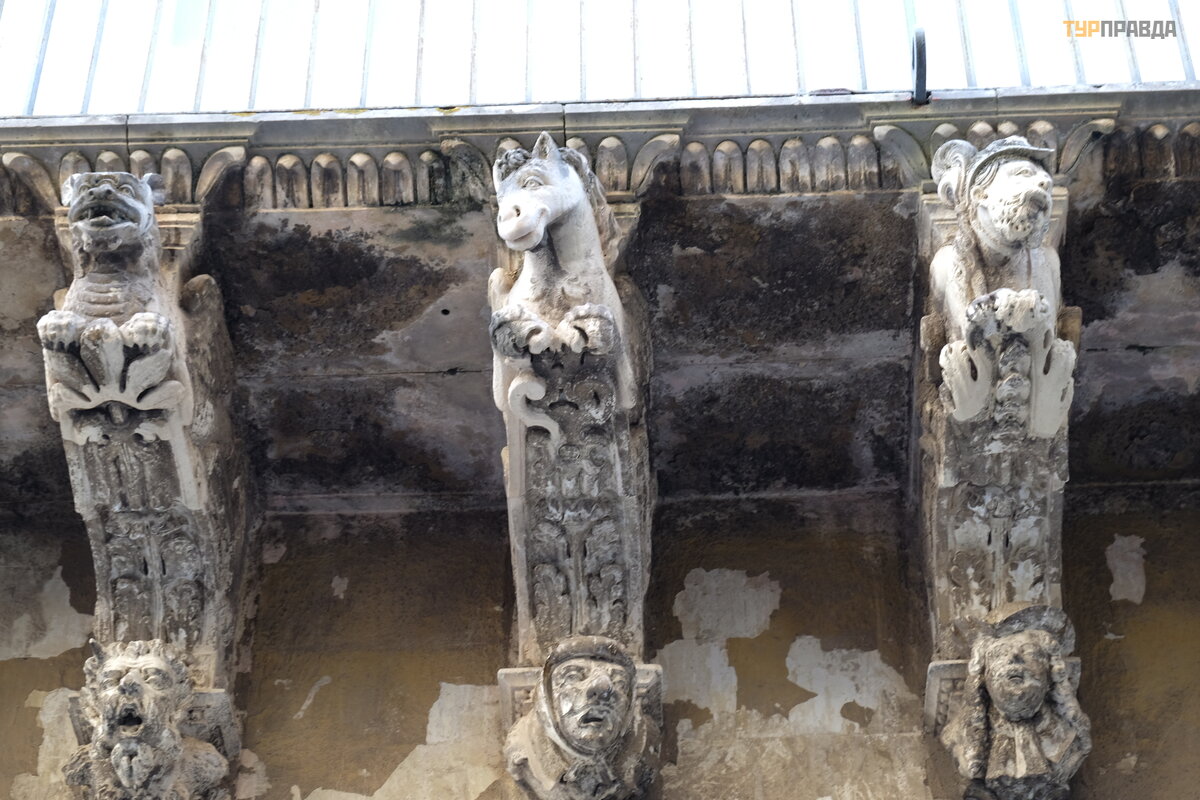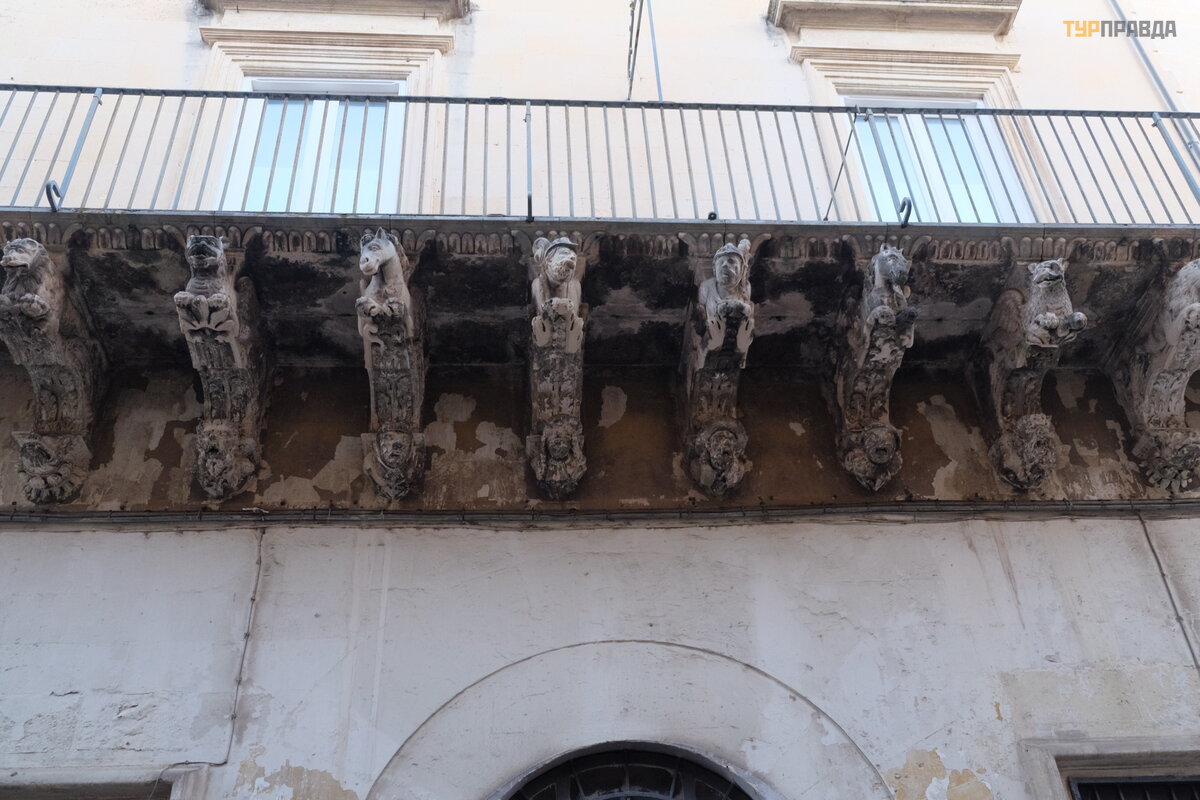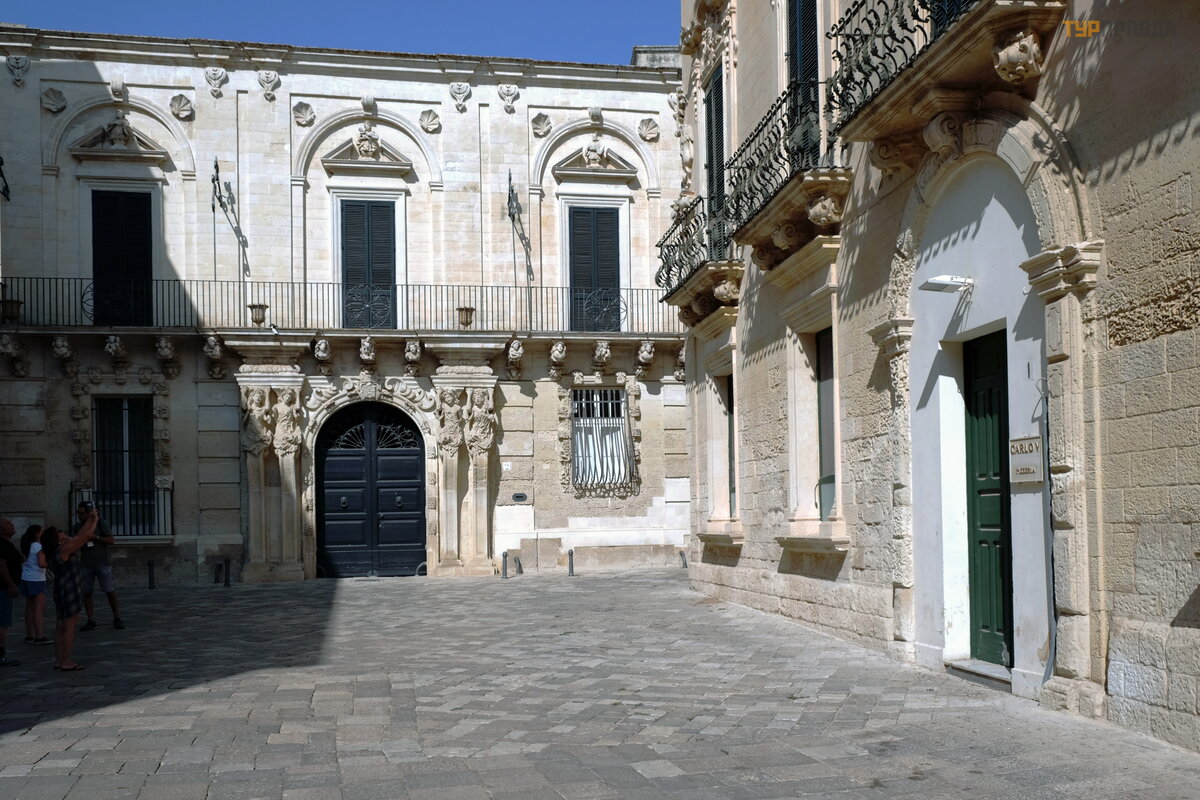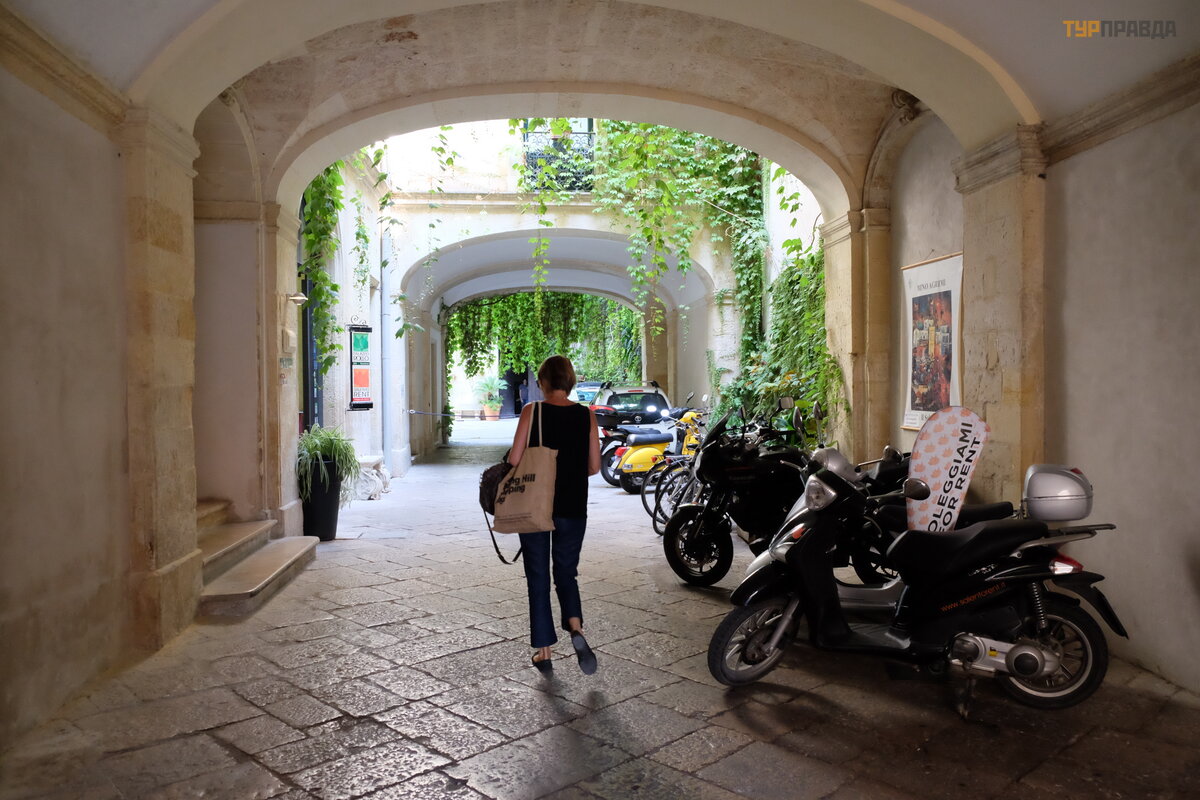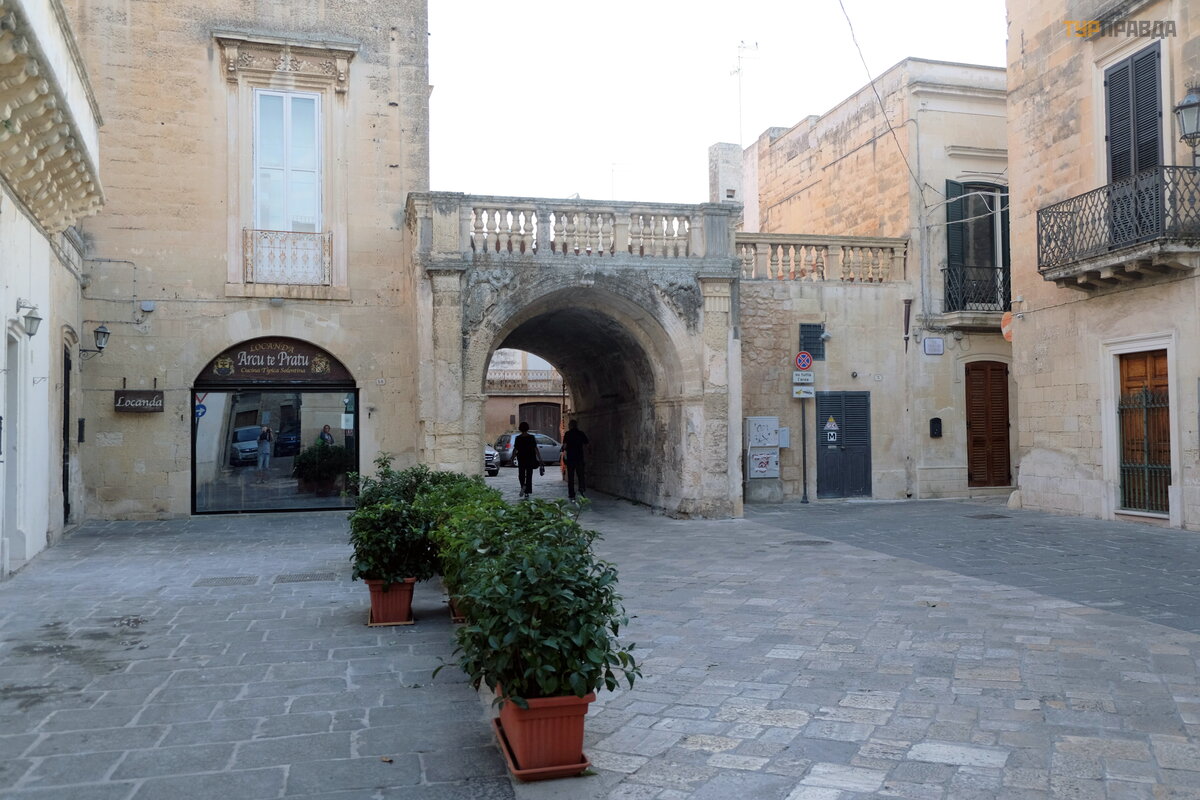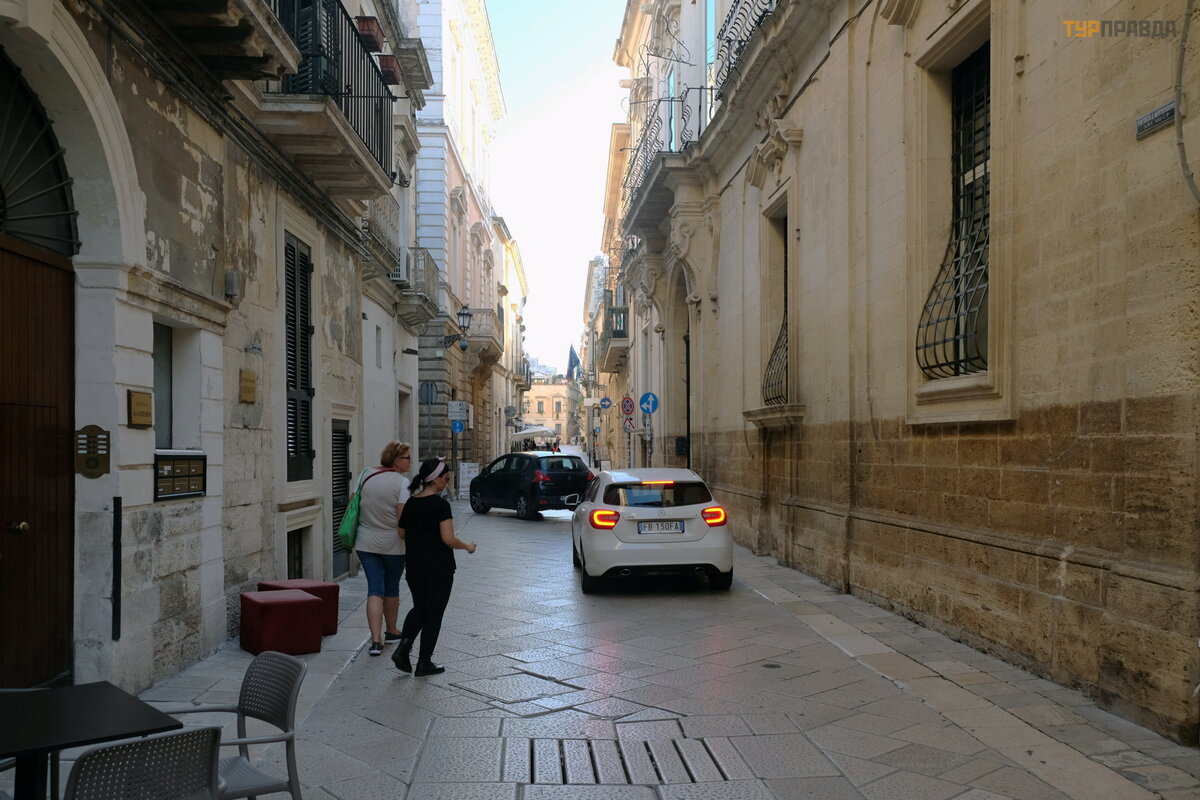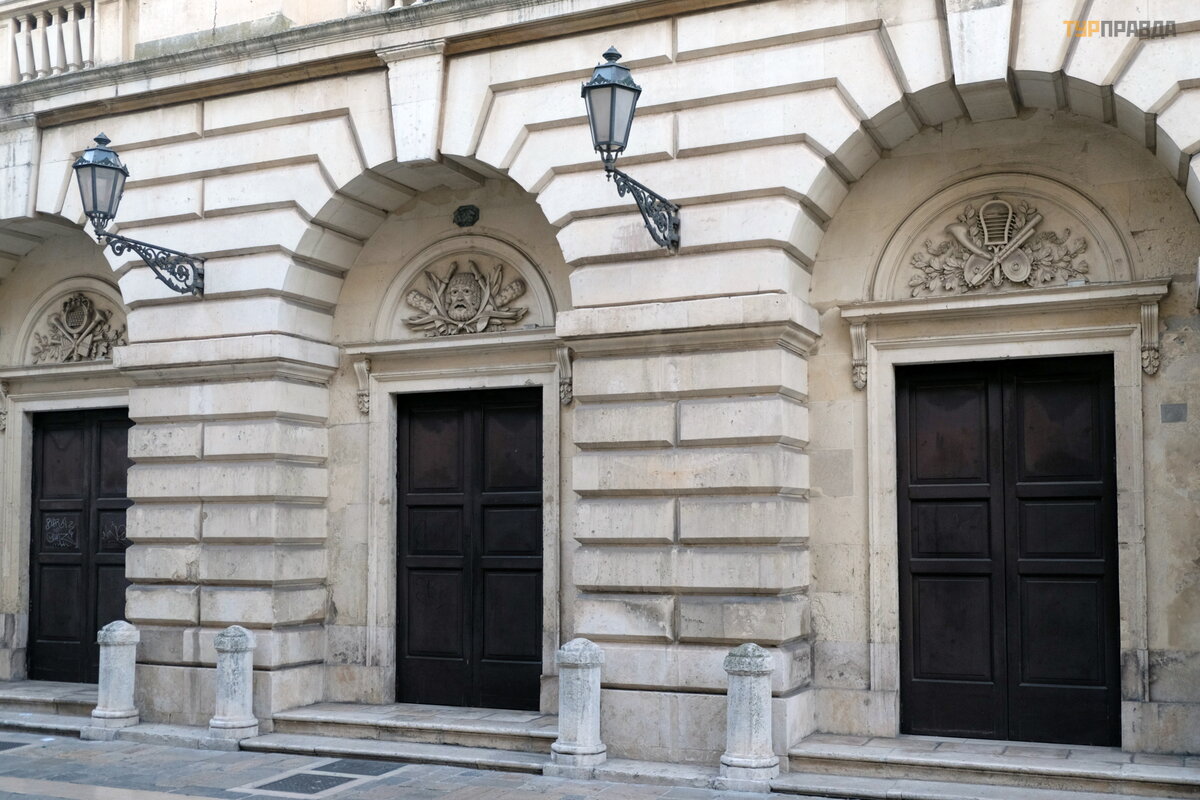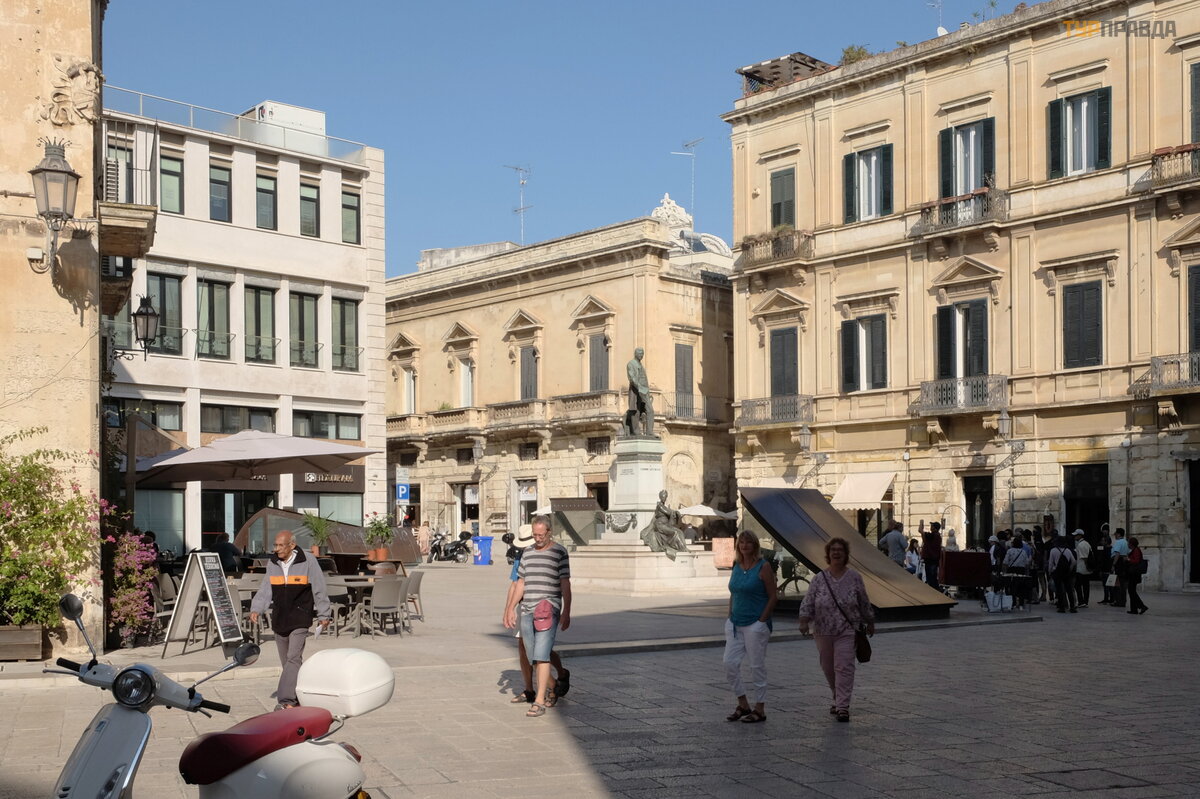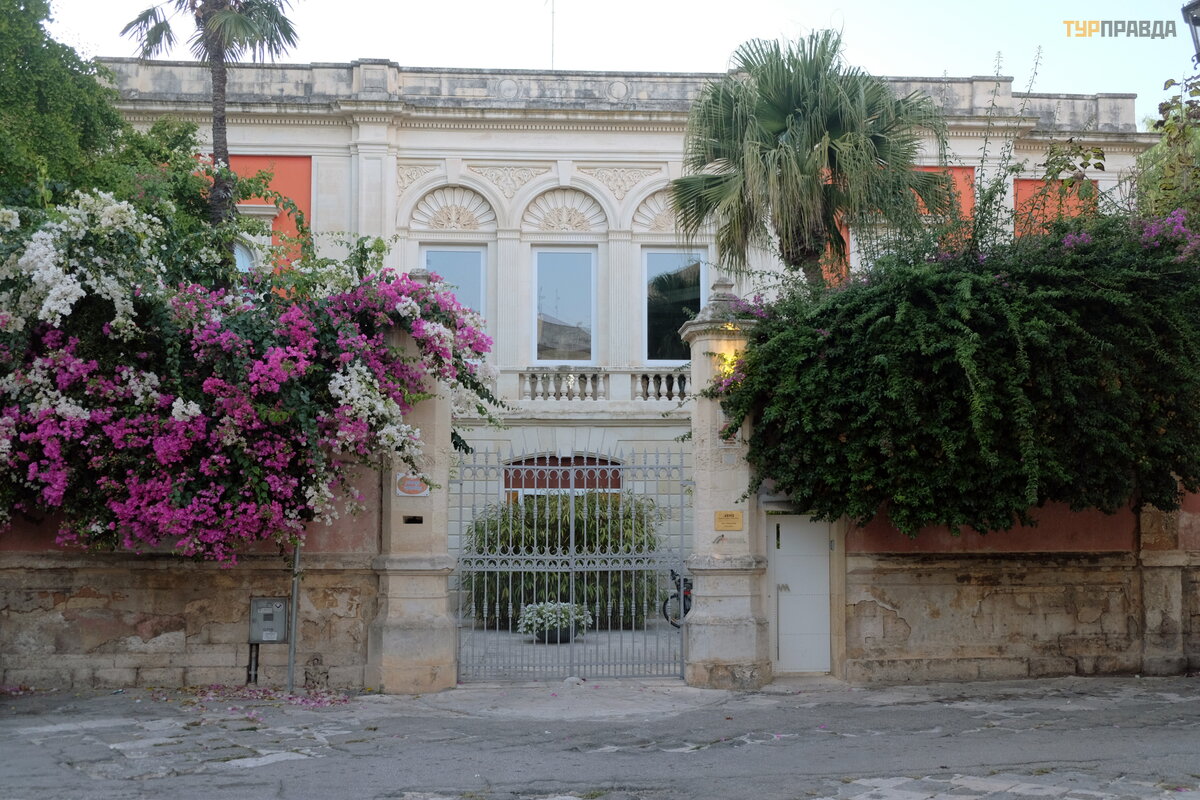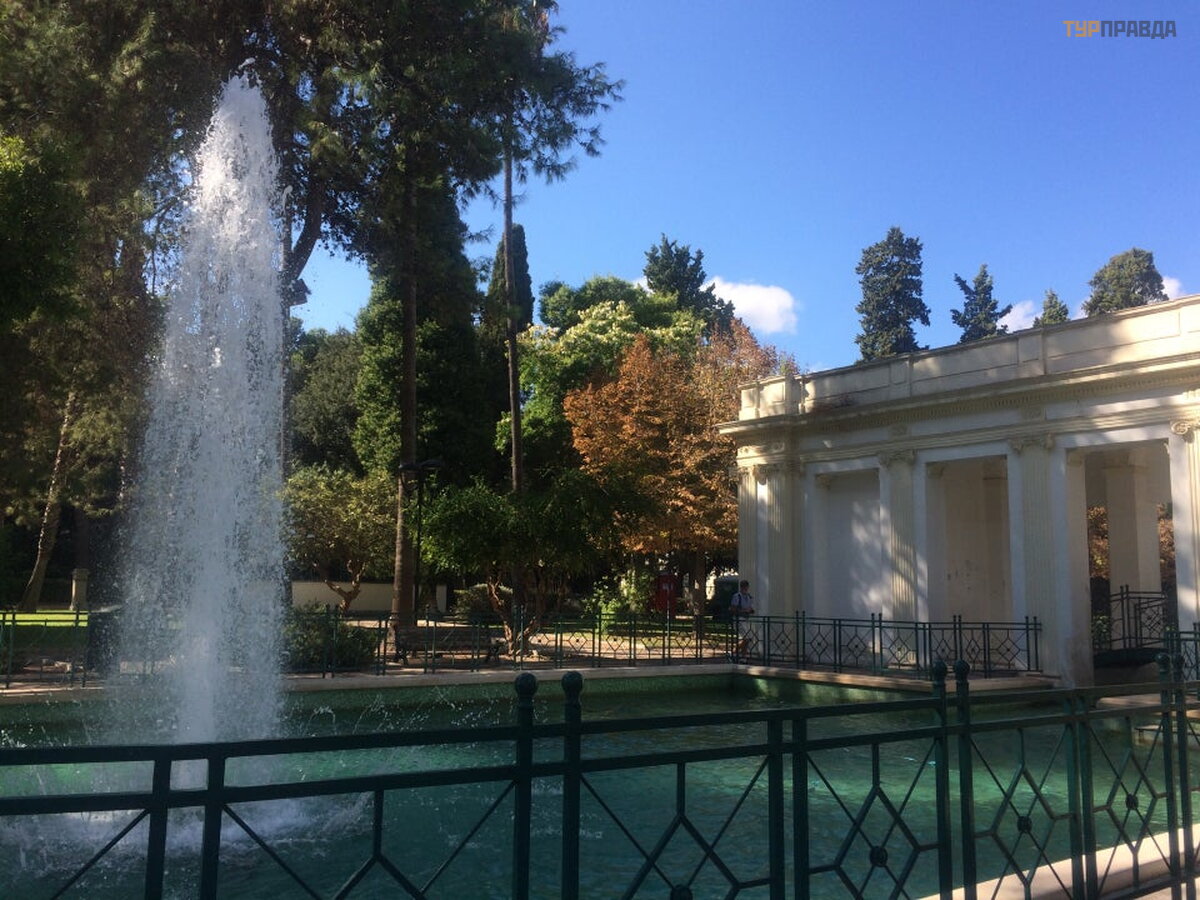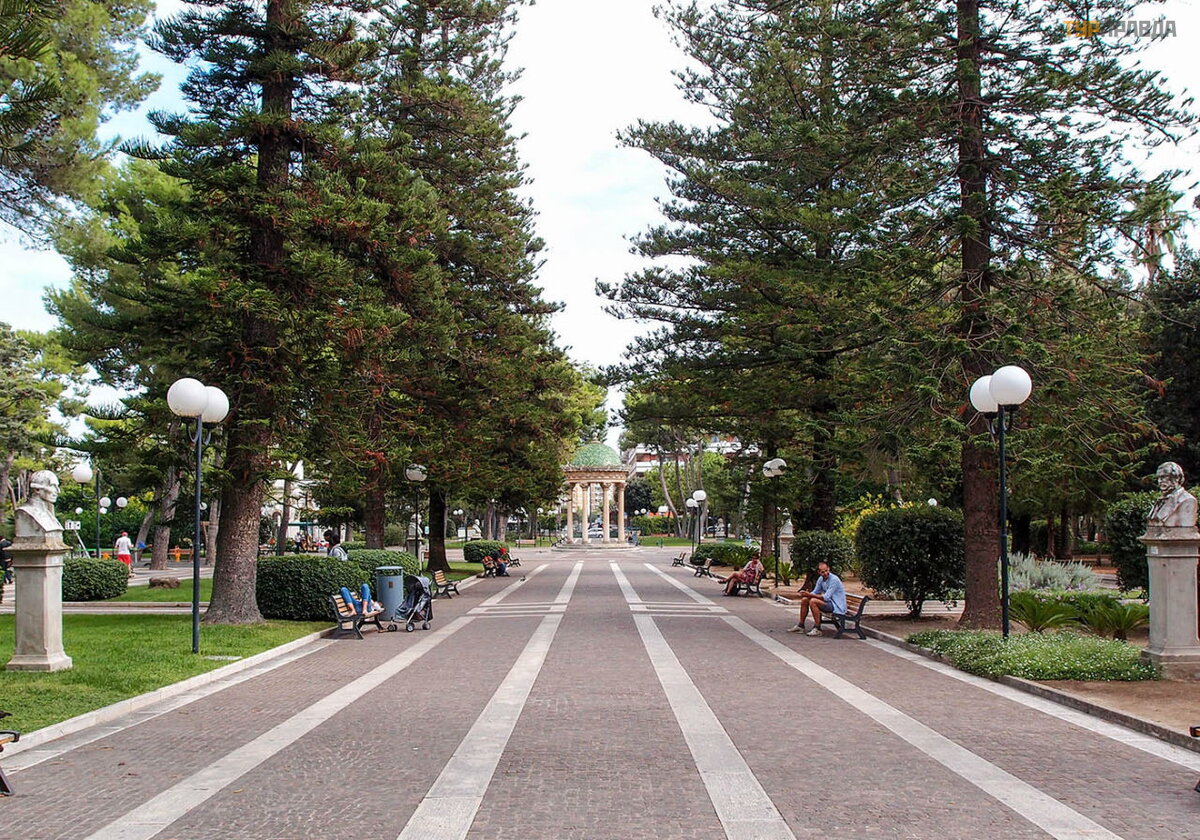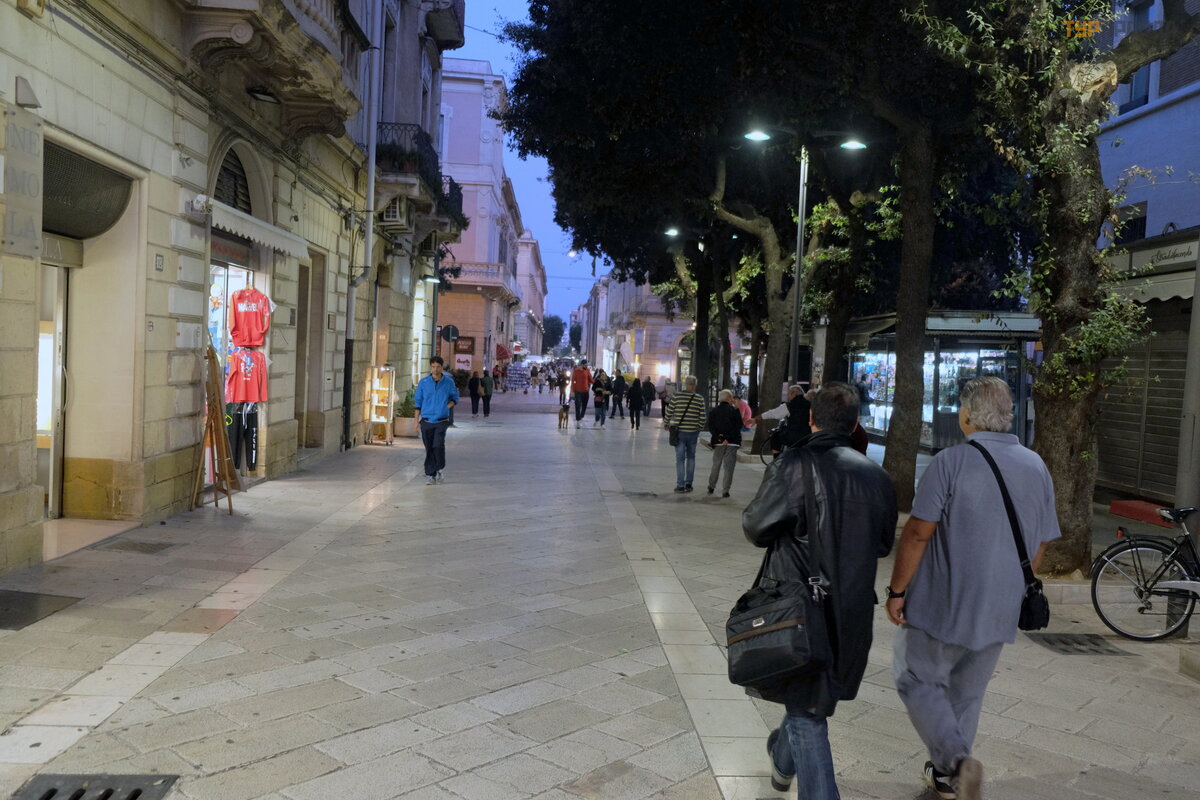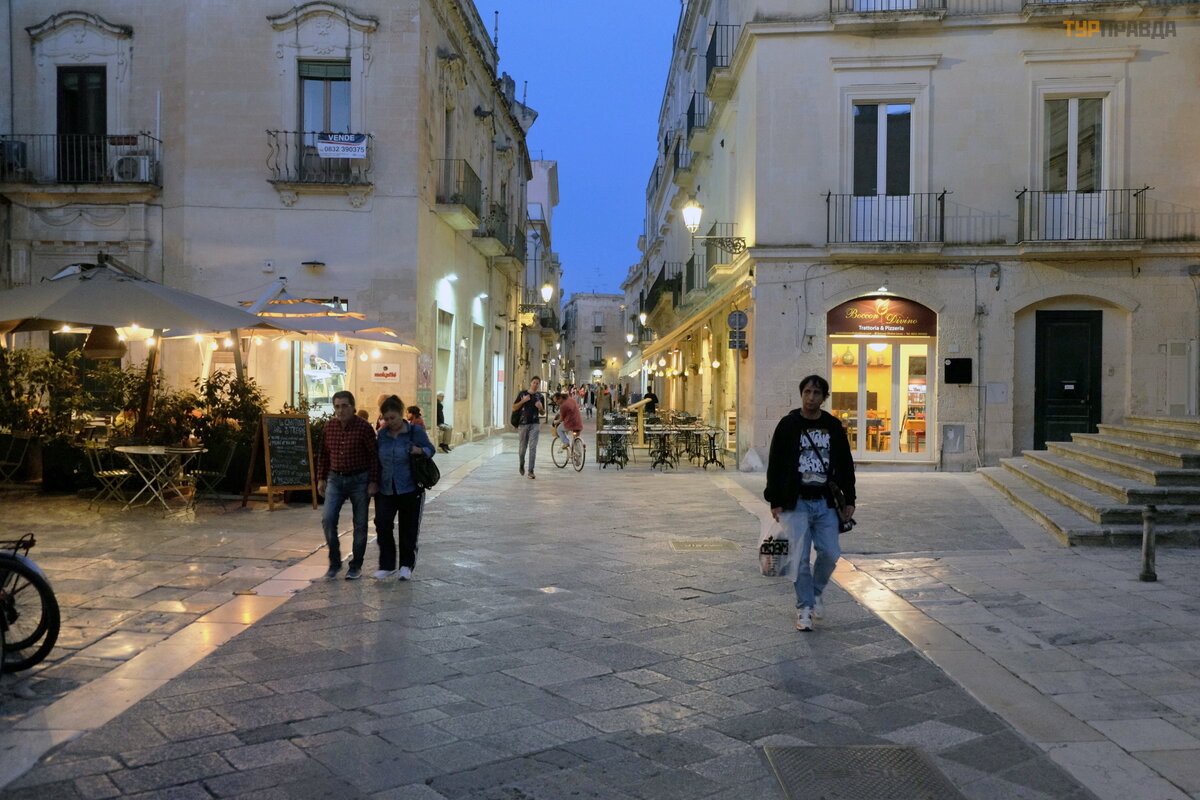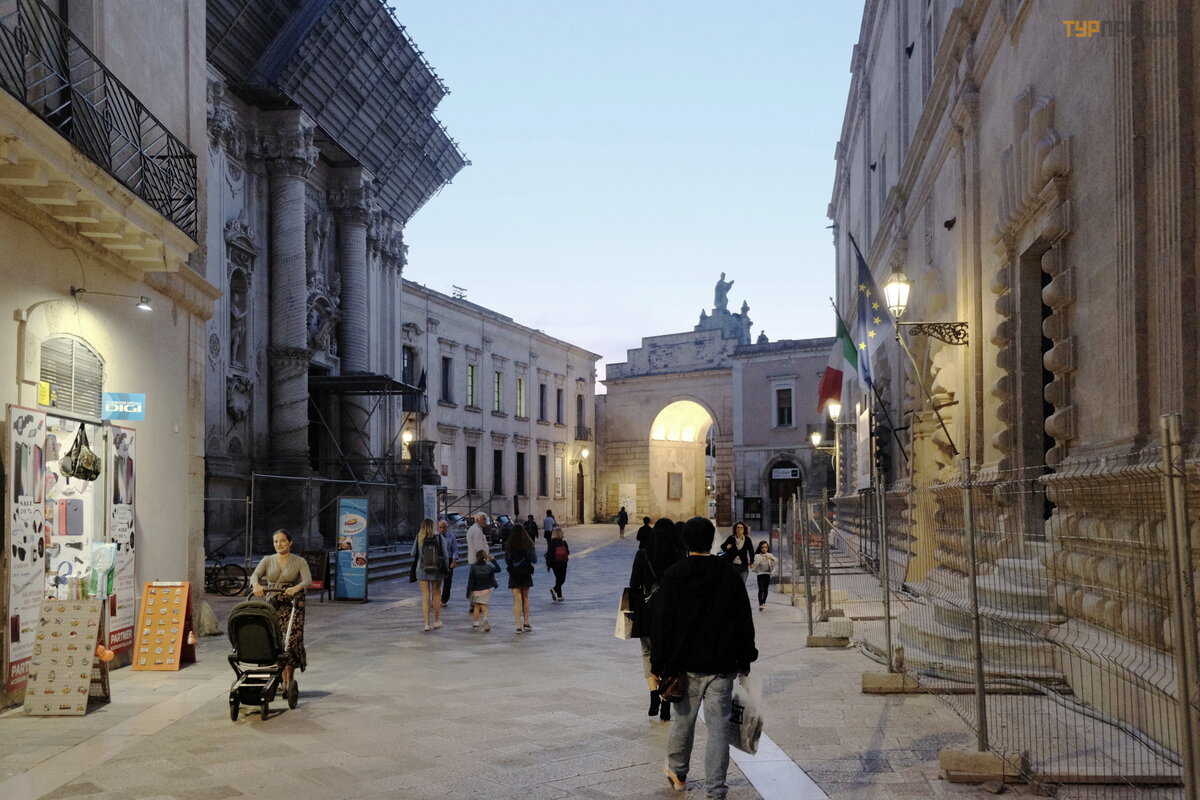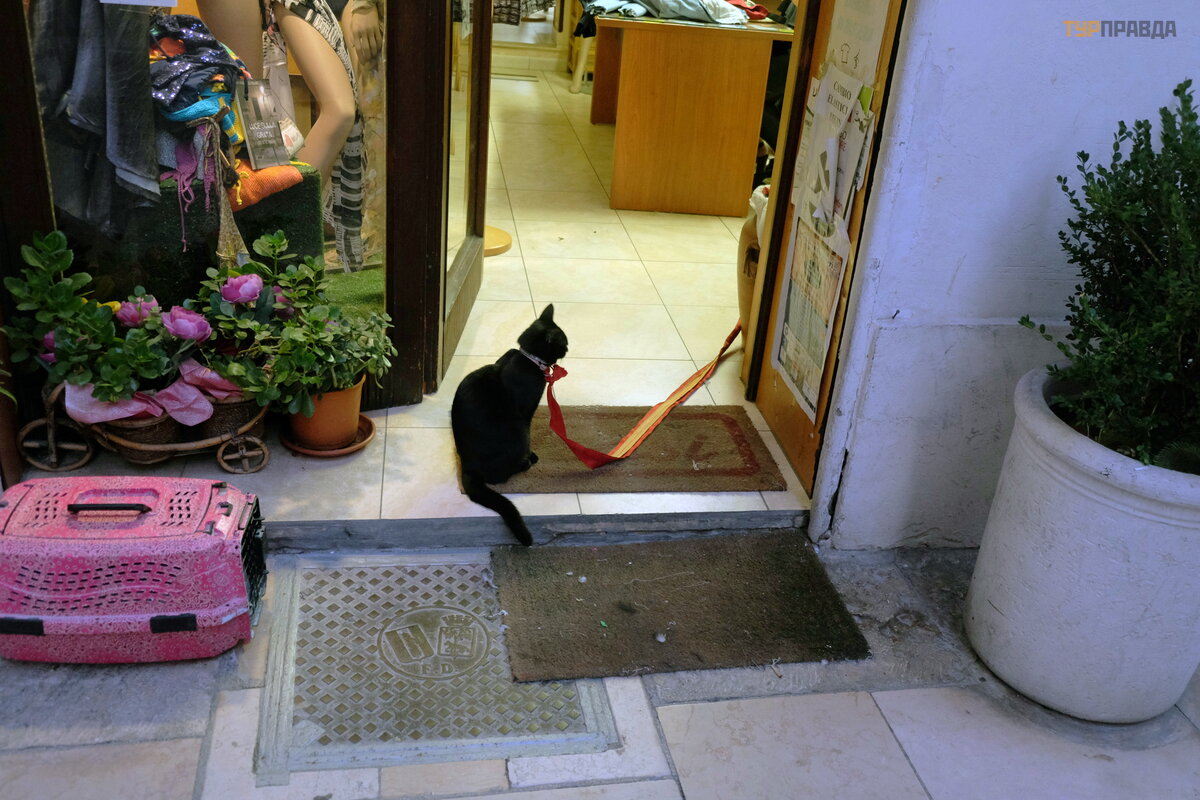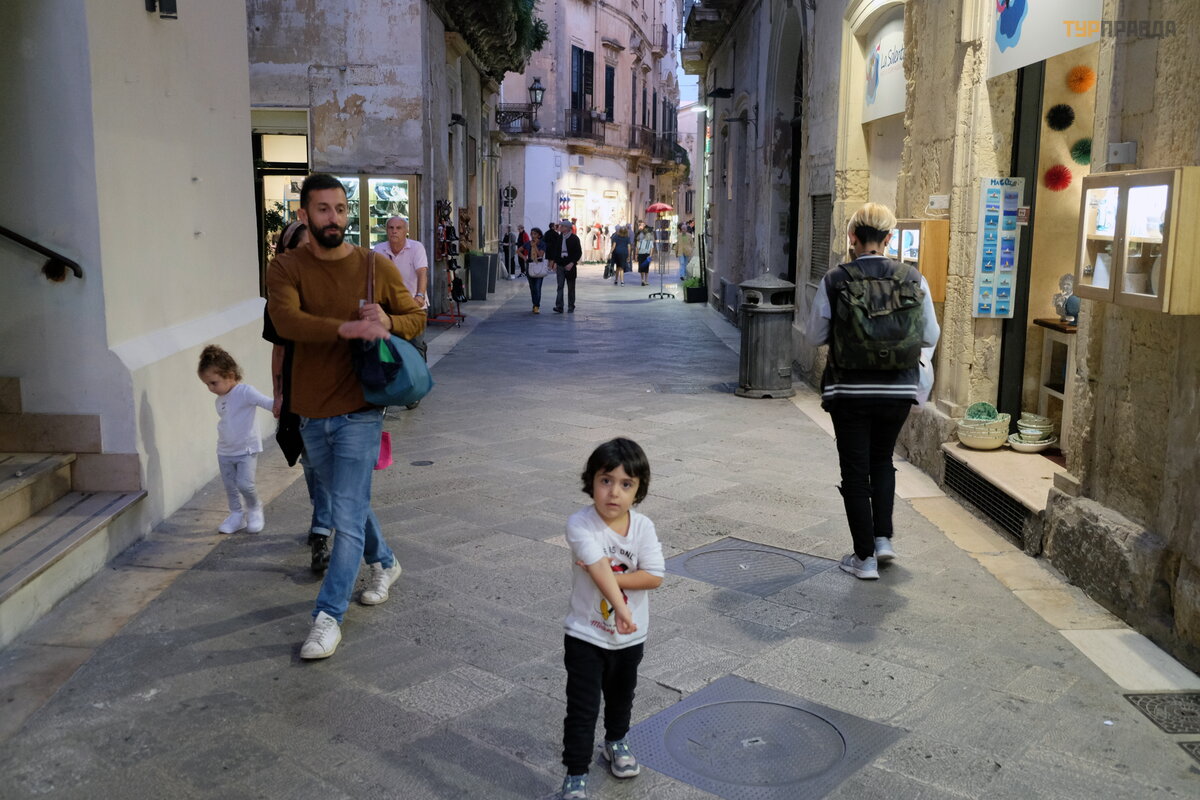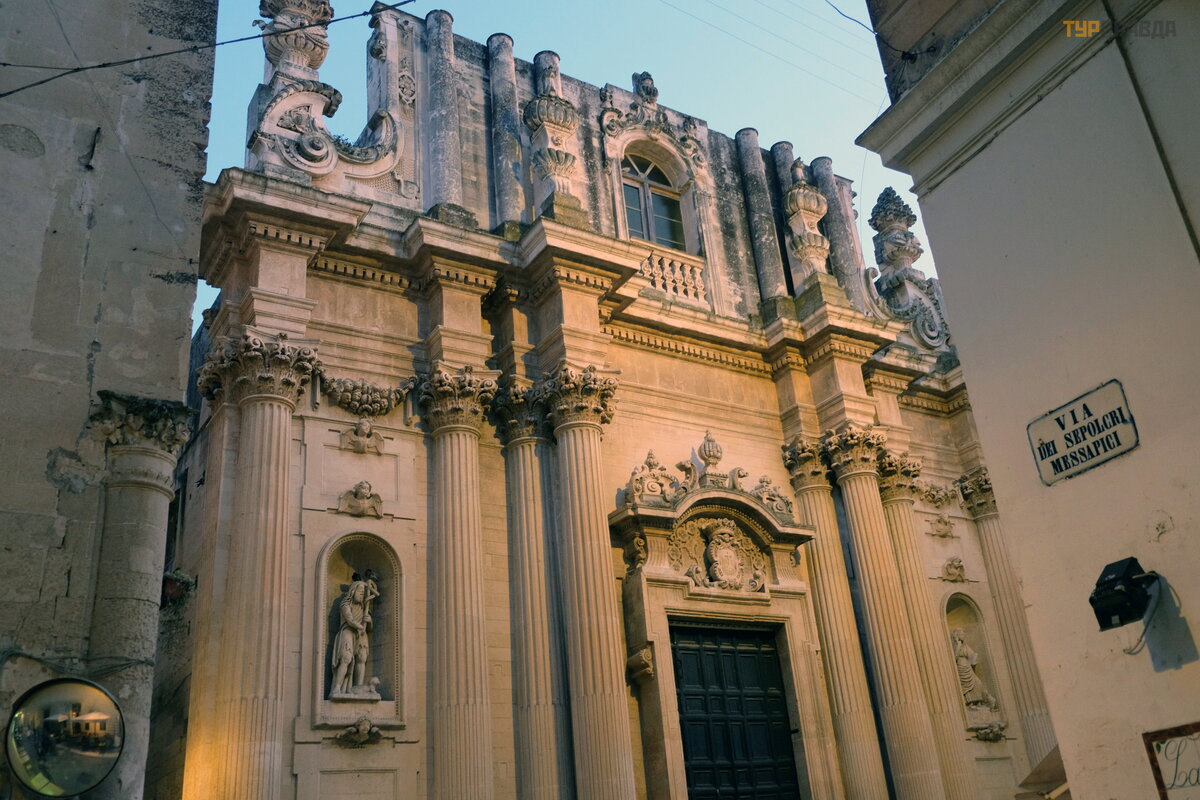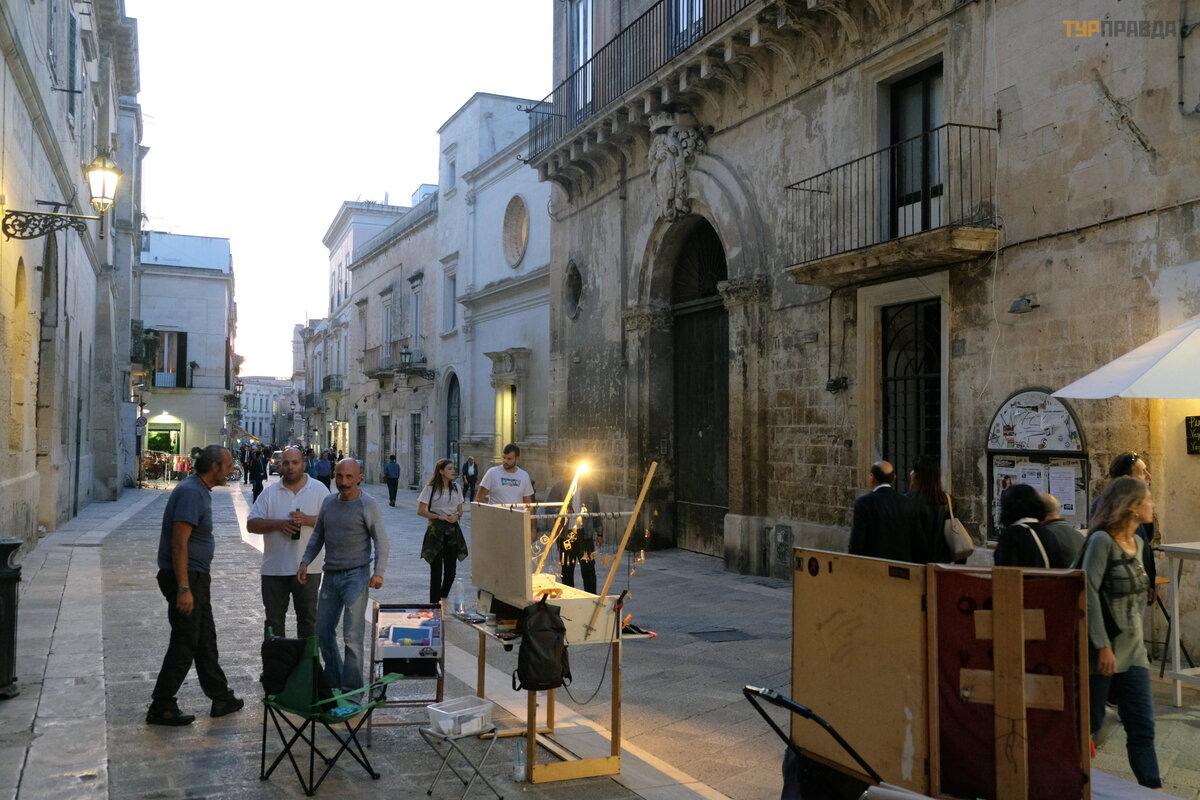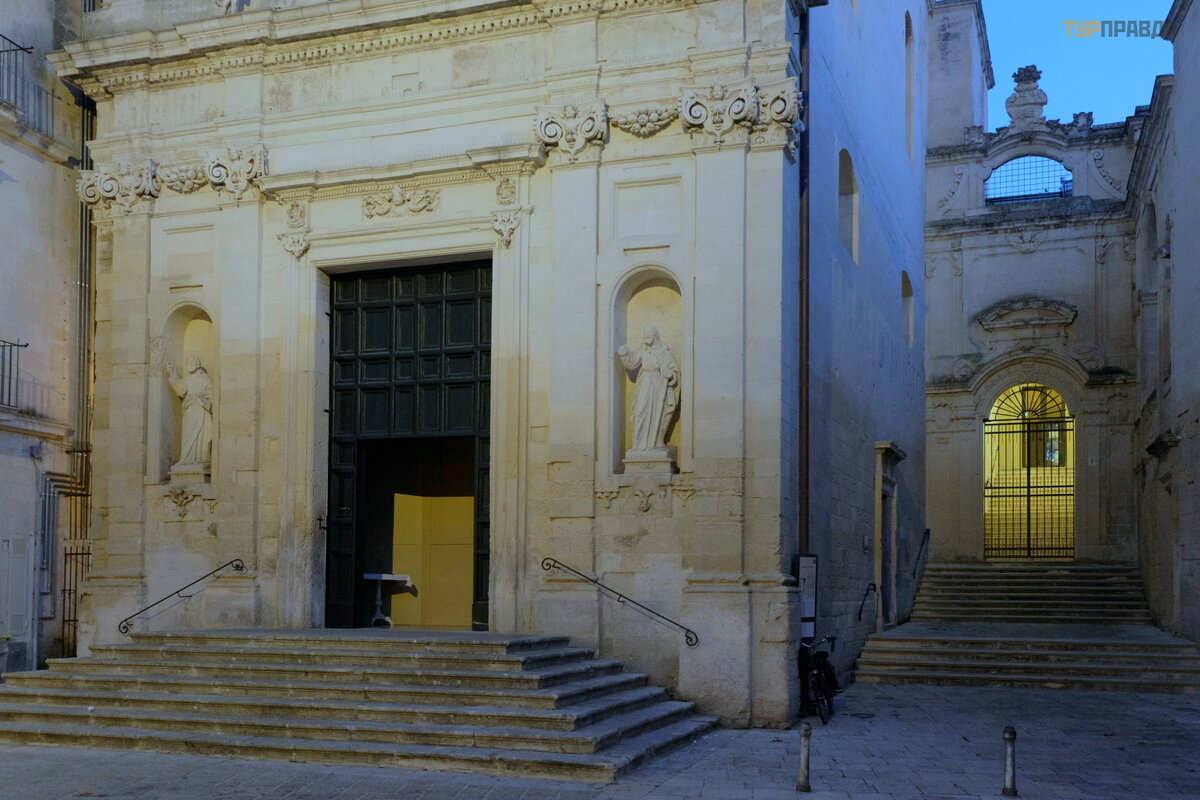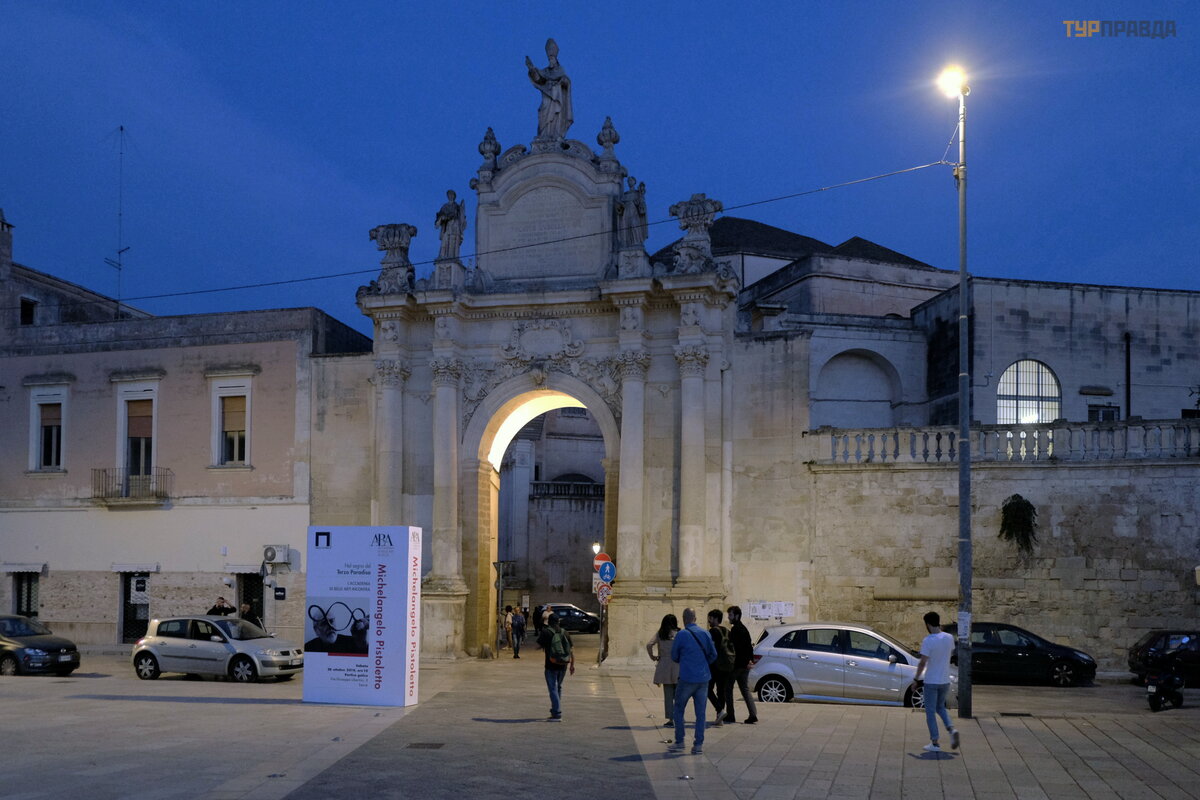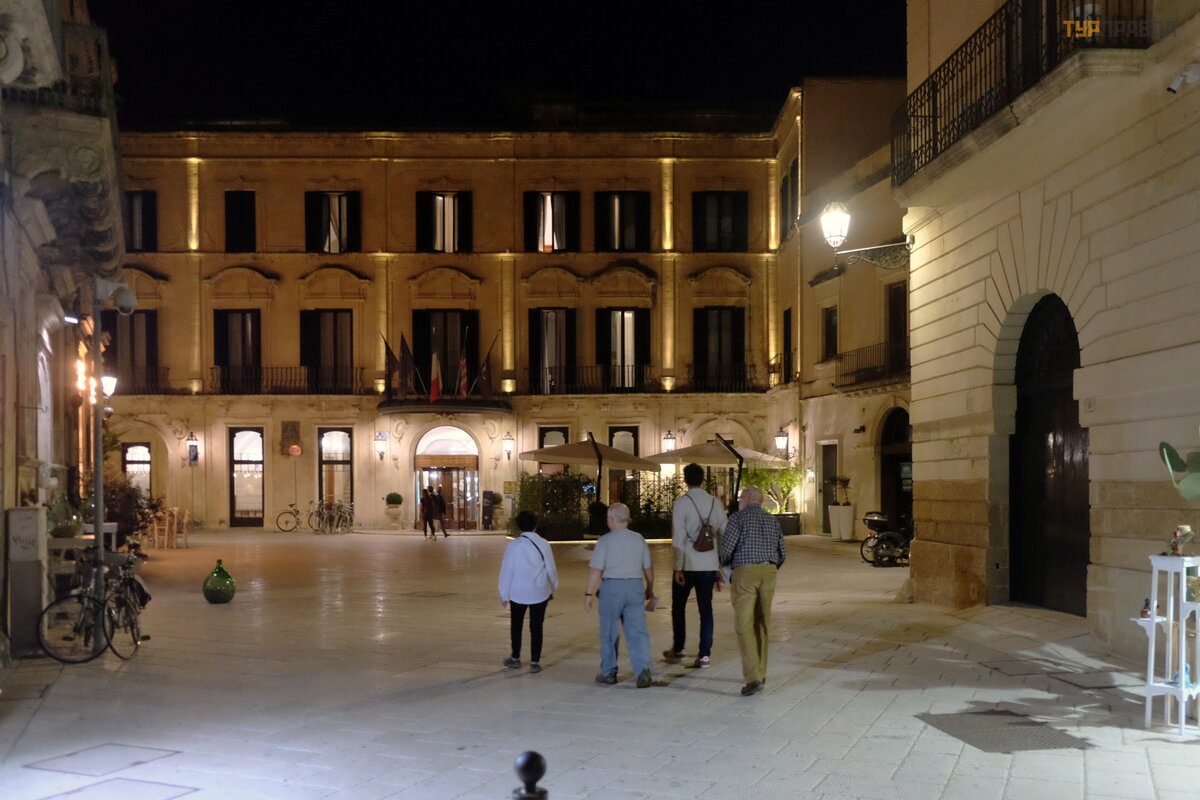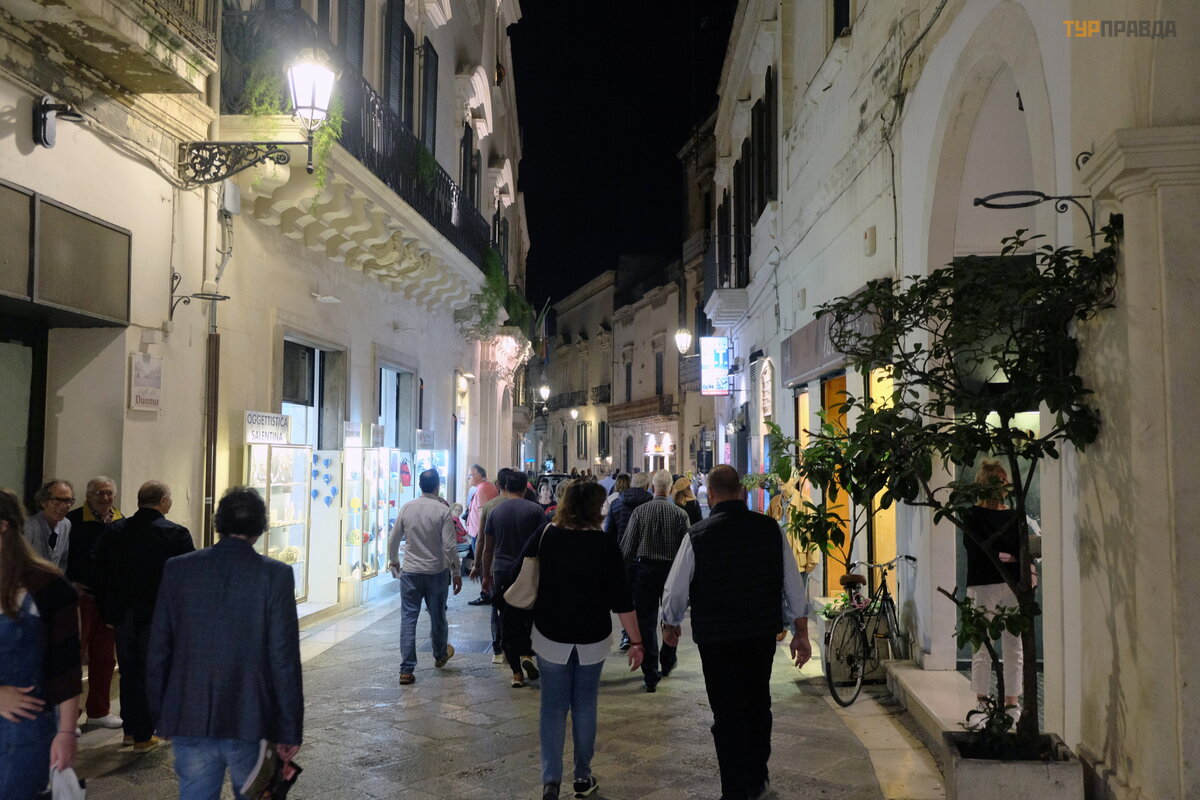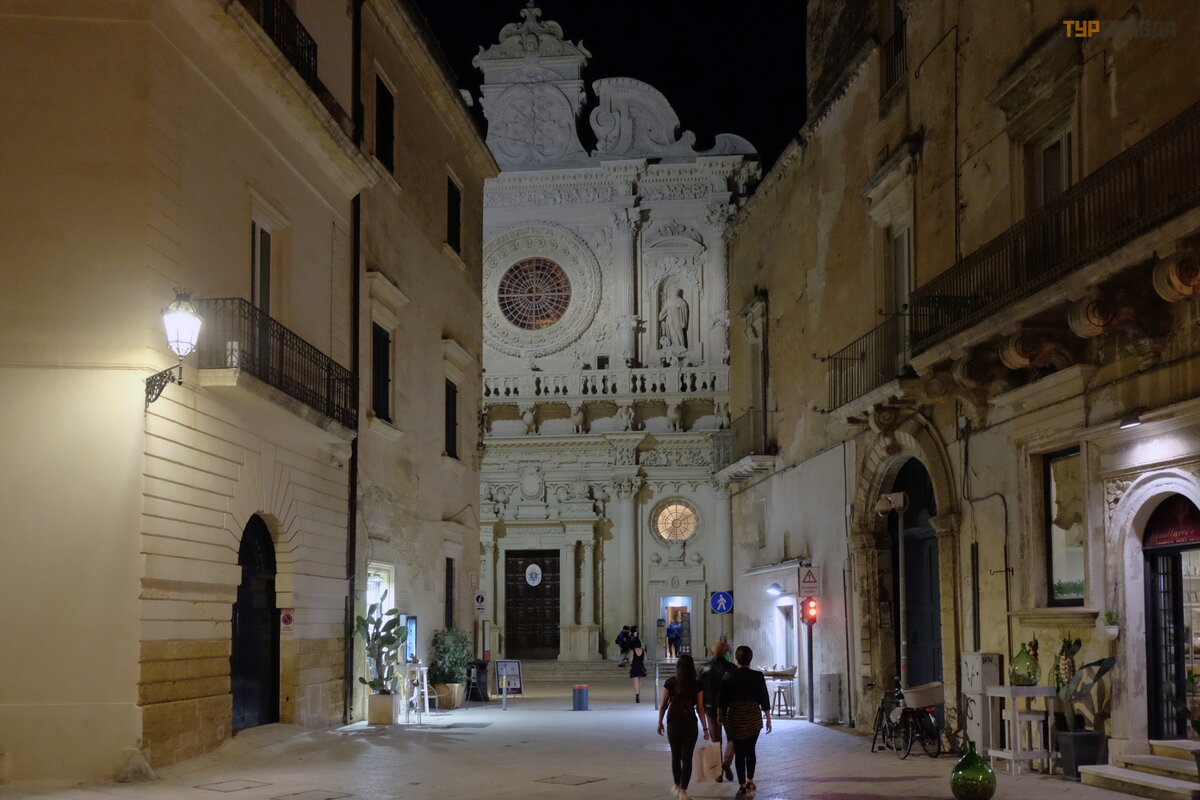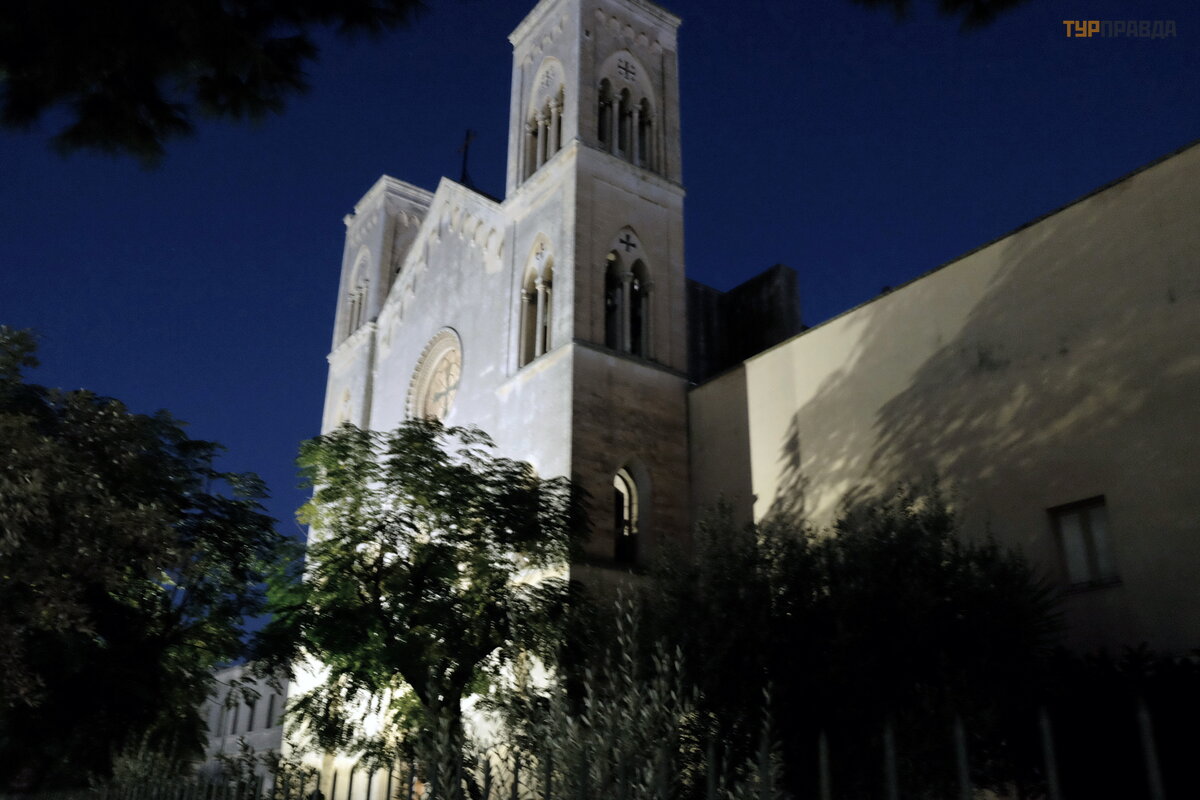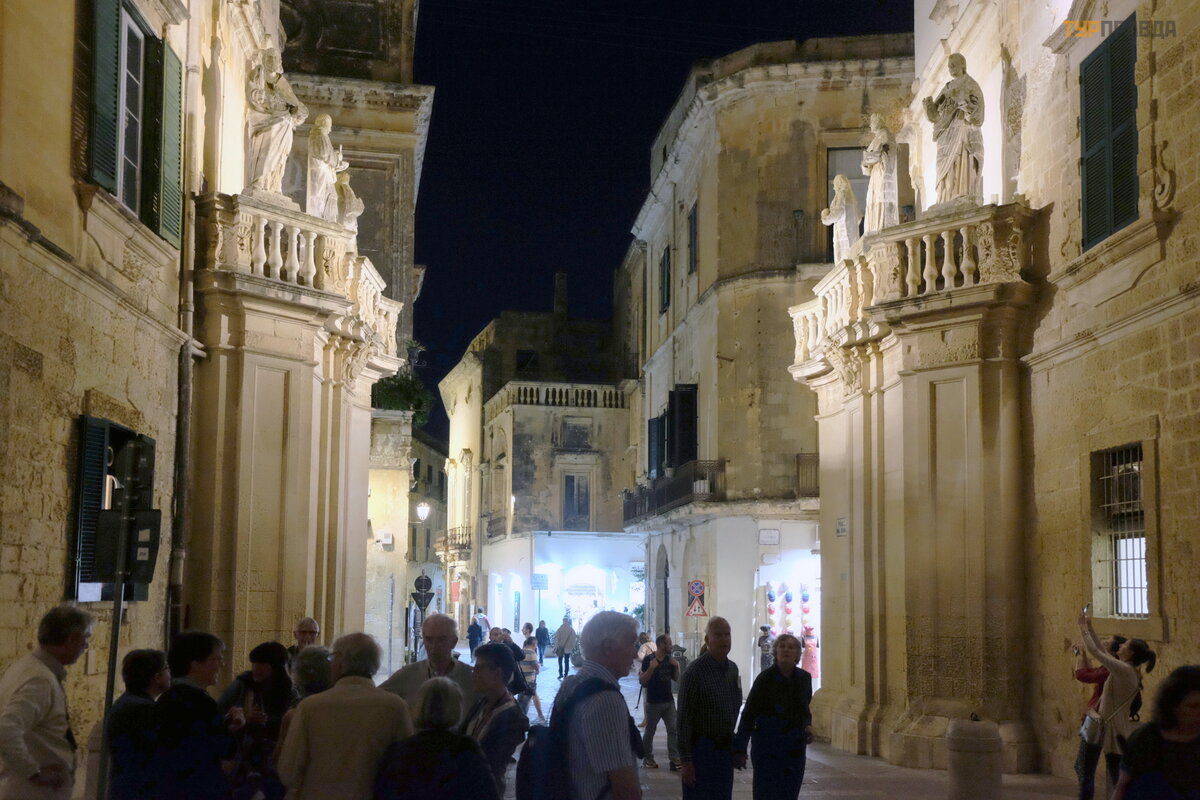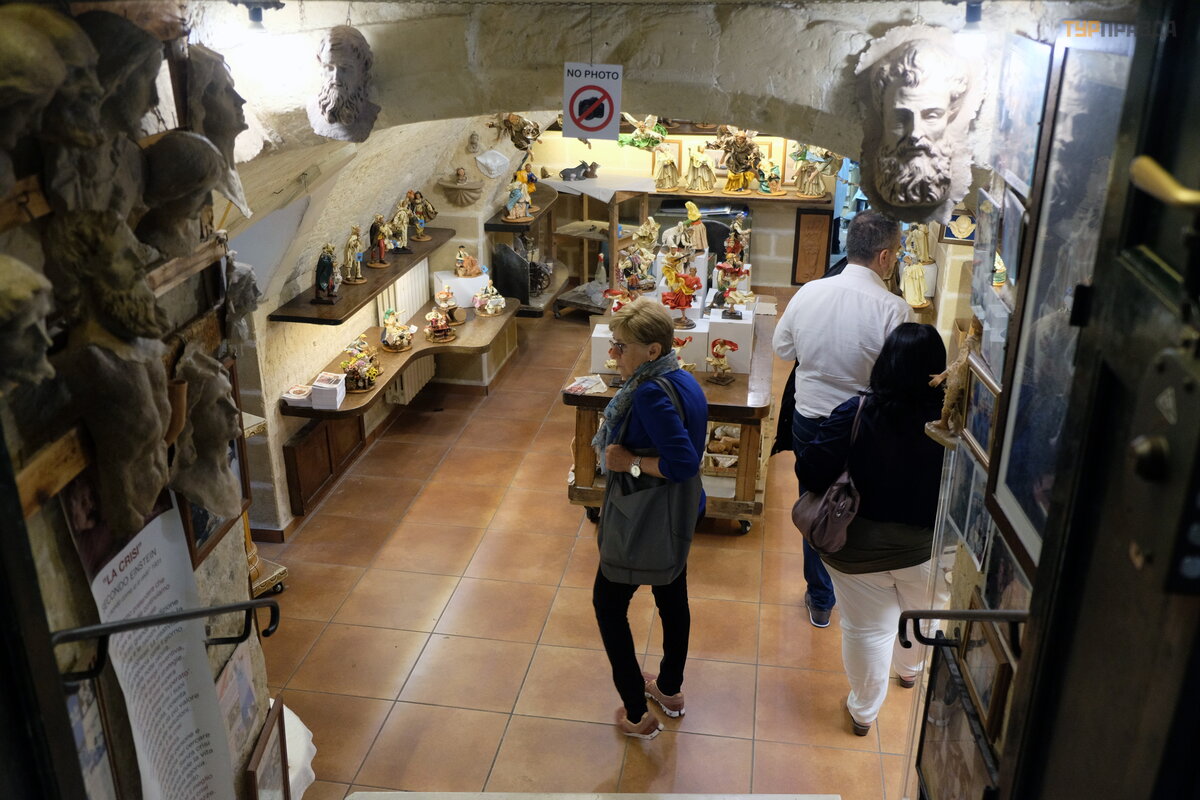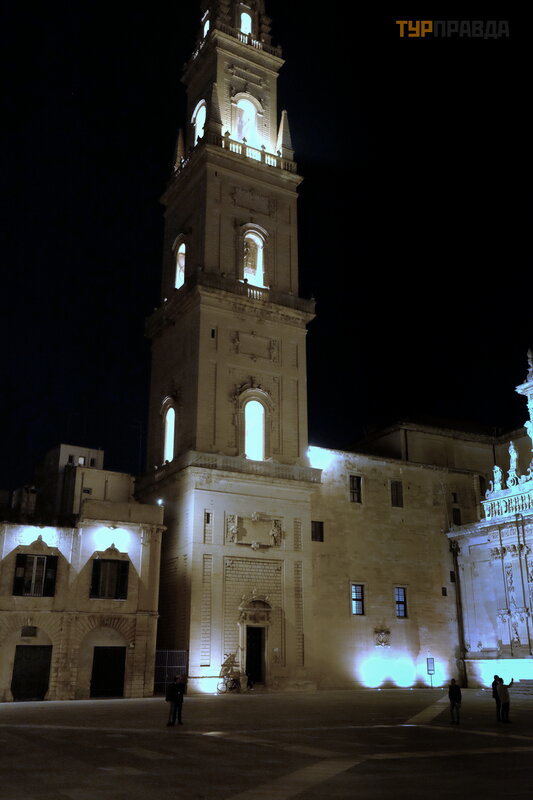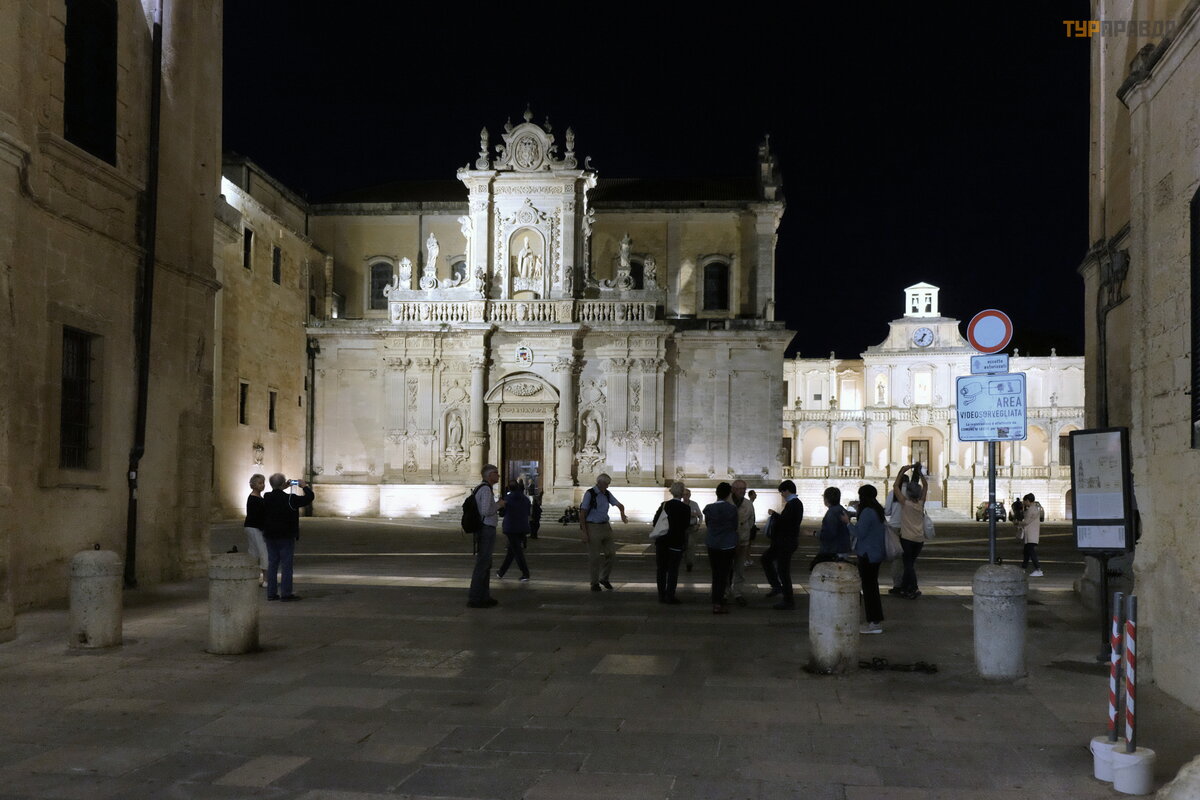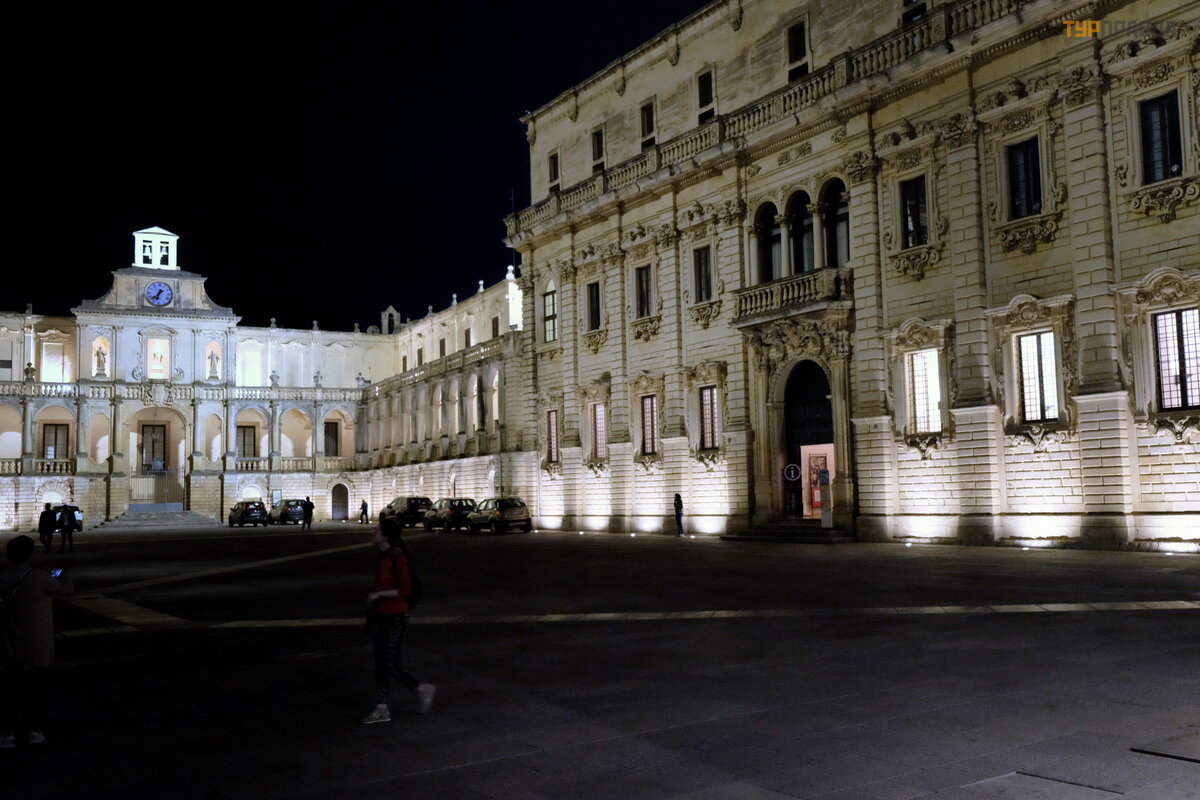Puglia and a bit of Rome. Part 8. Gallipoli and Lecce

To be continued. Start here >>>
Our last day in Puglia turned out to be hot and we decided to combine travel and relaxation. Therefore, we went to Gallipoli, which is located on the reverse side of the "Italian heel", already on the coast of the Ionian Sea.
From the station in Lecce, we got there by a small train in two cars, with a change along the road. The carrier is the railway company Ferrovie Del Sud Est. Travel time is about an hour forty, the ticket price is 4.50.
Gallipoli means "beautiful city" in Greek. From the station we go to the historical center, which is located on an island connected to the mainland by a bridge.
On the way we stopped at the Church of the Sacred Heart of Jesus (Chiesa del Sacro Cuore di Gesu), the church was built relatively recently, although it looks like a medieval one.
We reach the port, a tall square building is a modern hotel.
There is a fountain nearby, which is the oldest fountain in Italy, it was built by the Greeks in the 3rd century BC!
The upper part of the fountain was built on already in the 16th century.
In the distance, a small Sanctuary of St. Mary of Conetto, 1504
Crossing the 17th century bridge to the island. . .
. . . to the Angevin castle of the 13th century, later rebuilt. Previously, the entire island was protected by fortress walls. Now there are shops and restaurants in the castle, exhibitions are held.
We walk around the island along the road encircling the island, admiring the sea views.
The Church of San Francis of Assisi (Chiesa di San Francesco D`Assisi). 13th century, reconstructed in the Baroque style in the 17th and 18th centuries.
Cathedral Basilica dedicated to Saint Agatha (Basilica Cattedrale di Sant'Agata).
The current building was erected on the site of an older Romanesque church between 1629 and 1696. The facade (it is very difficult to find a good angle for a photo due to the tightness of the buildings) and the interior of the cathedral are made in the Baroque style.
There are 12 small baroque altars in the cathedral. The altarpieces are by local artist Giovanni Andrea Coppola.
The main altar is the work of the great architect and sculptor Cosimo Fanzago, famous for his work in Naples.
The island part of the city is quite small, we walked around the island in a circle.
Wandering the streets of the historic center:
We went to rest on the city sandy beach called Purita. . .
. . . by the name of the church of Santa Maria della Purita, which is located right above the beach. This oldest and most picturesque sanctuary of Gallipoli was erected in 1664. Built at the expense of the guild of loaders, it served as a chapel for them. Later, representatives of various brotherhoods found refuge here.
After swimming enough in the warm sea, we returned back to the station and at 16.00 arrived back in Lecce to watch the beauty of the city.
And there is something to look at. Lecce is a fairly large city, in addition to the historical center, there are many areas with good chain stores. The city's football team plays in the Italian top league.
From the station we go to the city center, we pass by the building on the square named after the 19th century Italian poet Giosue Corducci:
Walking around the city, admiring the churches of Lecce. Just the realm of baroque!
The Basilica of Saint John the Baptist (Basilica di San Giovanni Battista al Rosario) was built in the 14th century. The current building dates back to the 17th century.
Church of St. Matthew (Chiesa di San Matteo), 1667-1700
Church of Santa Clara(Chiesa di Santa Chiara), 1687,
built on the site of an earlier religious building of the 15th century. Interesting facade with a sloping top.
There are also beautiful carved altars inside:
The Church of Jesus (Chiesa del Gesu), built in 1575 by the Jesuit monastic order. Strict pediment, on which the sculpture of the Passion of Christ is located.
Beautiful interior:
Ceiling:
In southern Italy, they make the best papier-mâ ché figurines, considering it their own invention, and call it "kartapesta". Church crucifixes and numerous attributes of faith began to be made using the papier-mâ ché technique.
In modern Lecce, the traditions of this craft are carefully preserved and continue to develop.
There are also such papier-mâ ché figures on the streets:
The city has a wonderful atmosphere, the southern sun, the golden color of beautiful buildings. I don’t want to leave this city anywhere, I want to wander through its streets and squares, looking at the houses.
Villa Communale City Park is not far from the city center.
Evening has come, the streets of the city are lit with soft warm light.
The square of the cathedral is simply magical in the evening:
This is the end of our trip to Puglia. You should definitely come back here, because many cities have not yet been seen.
In the morning we were moving to Rome, this is my next story> >>
